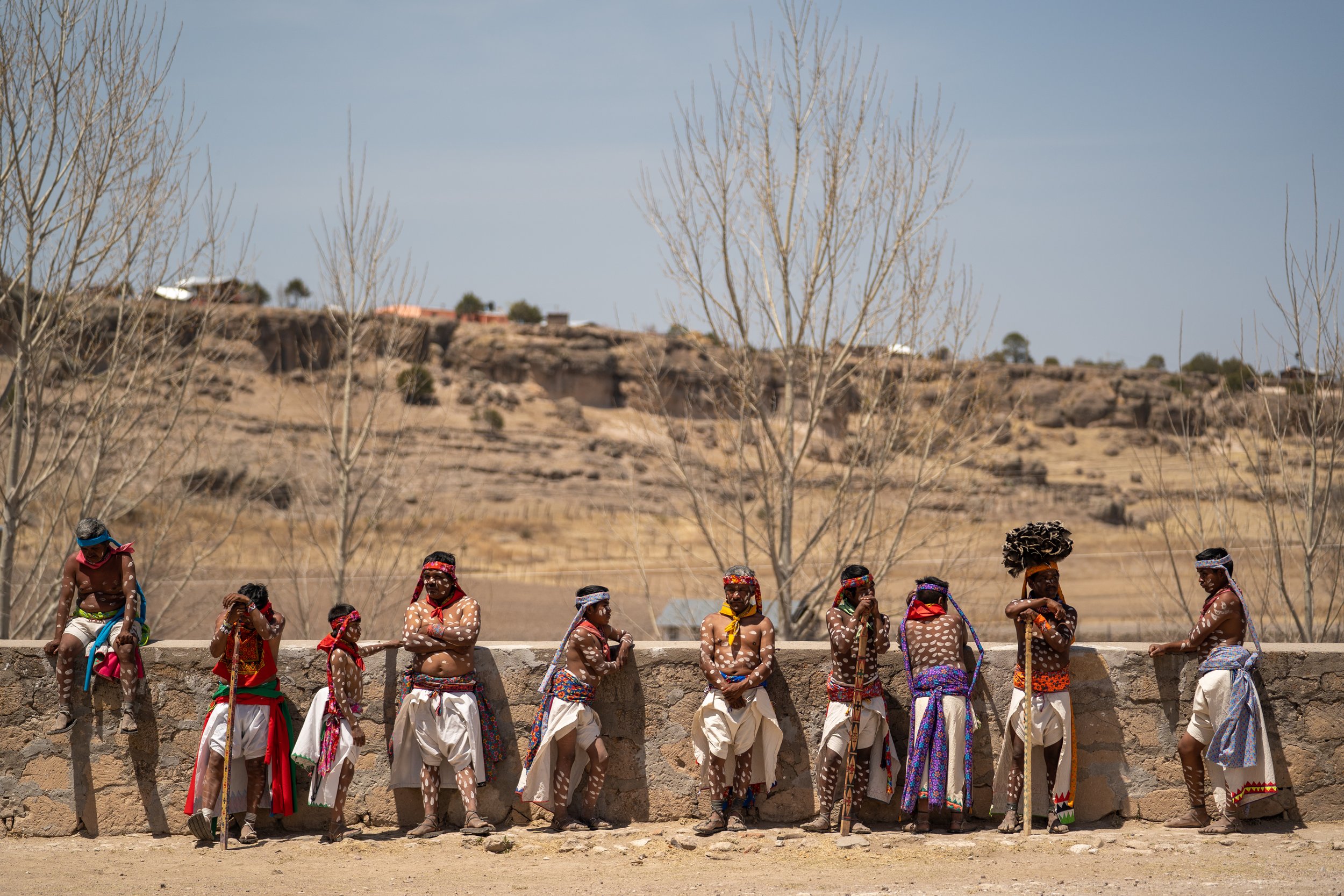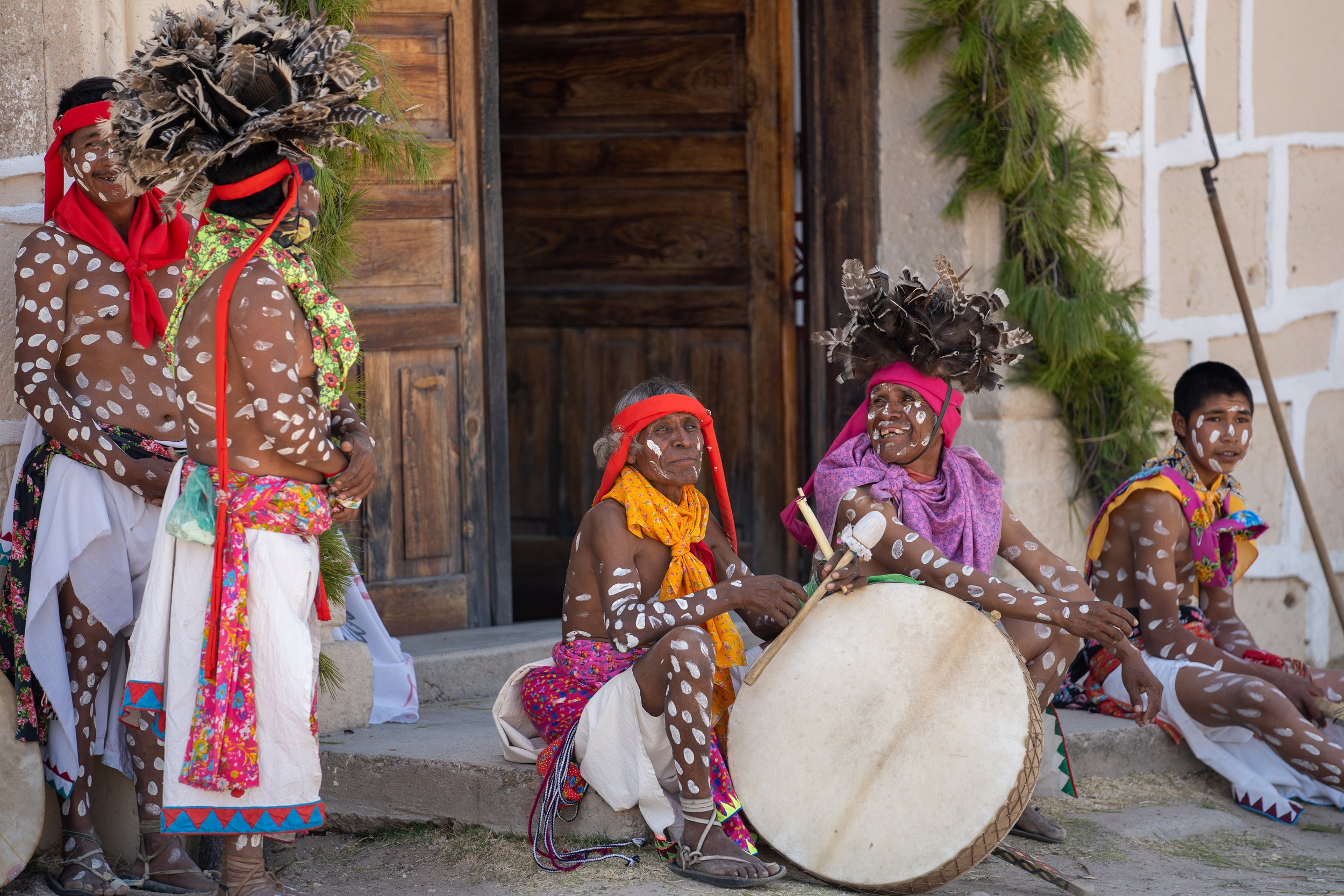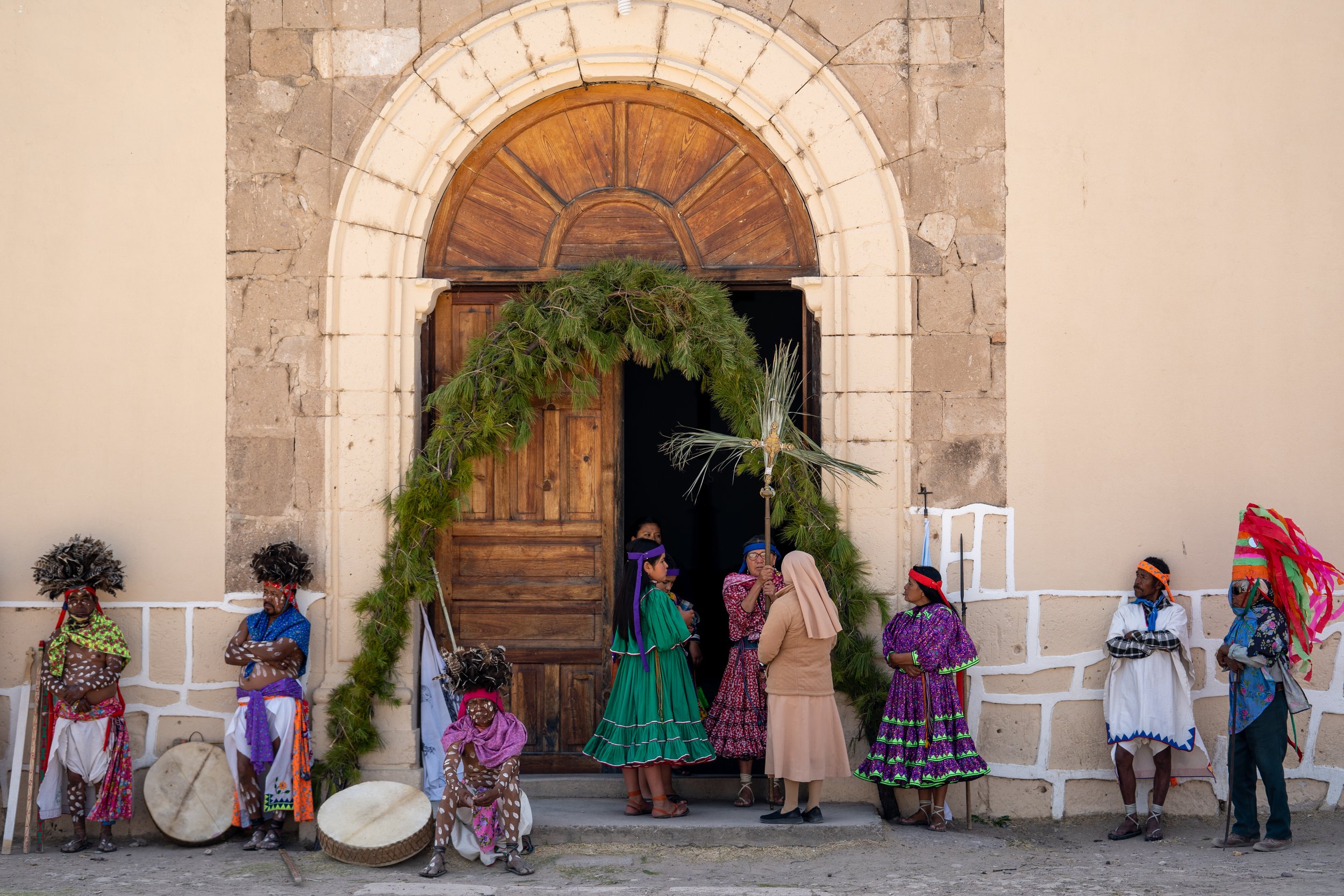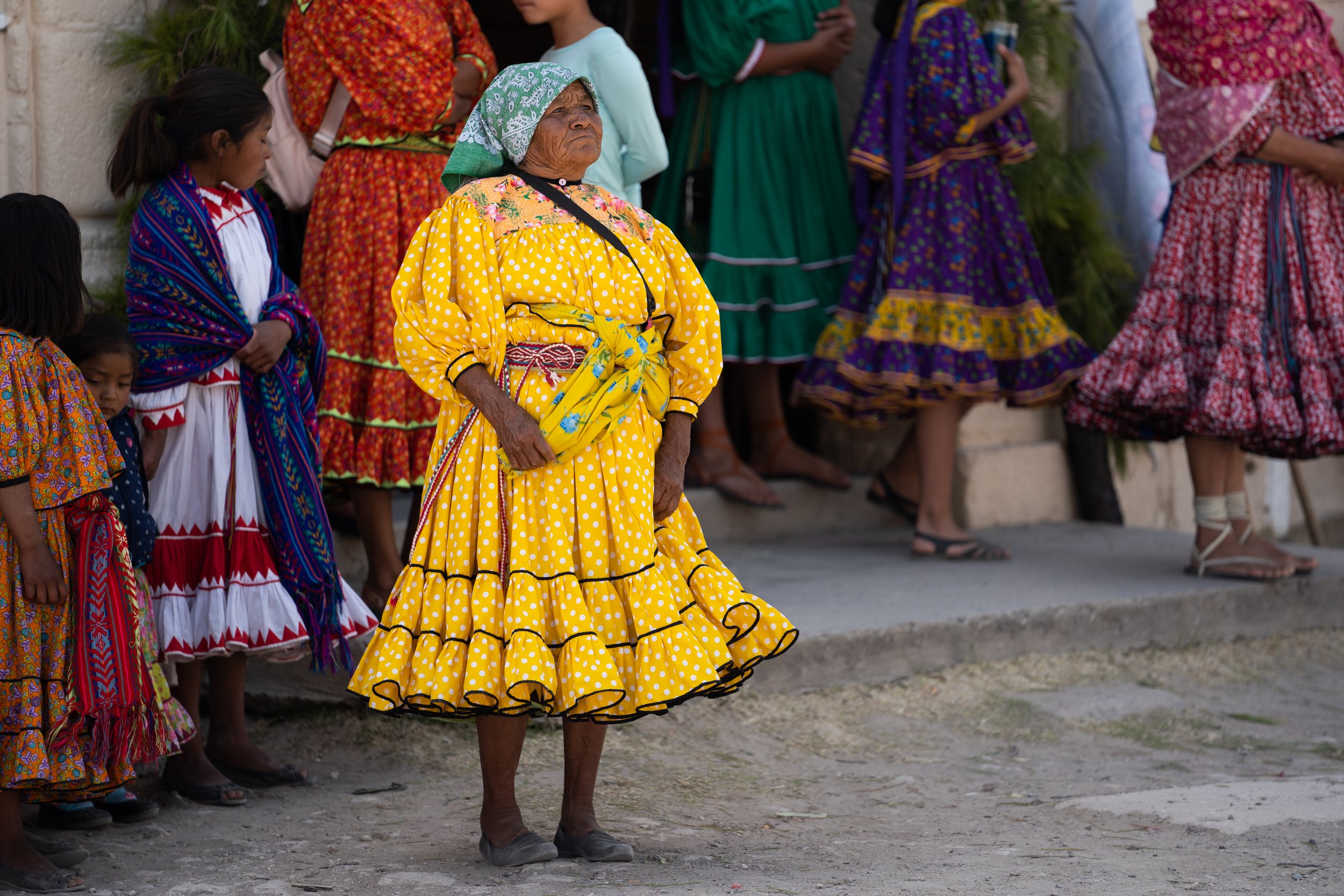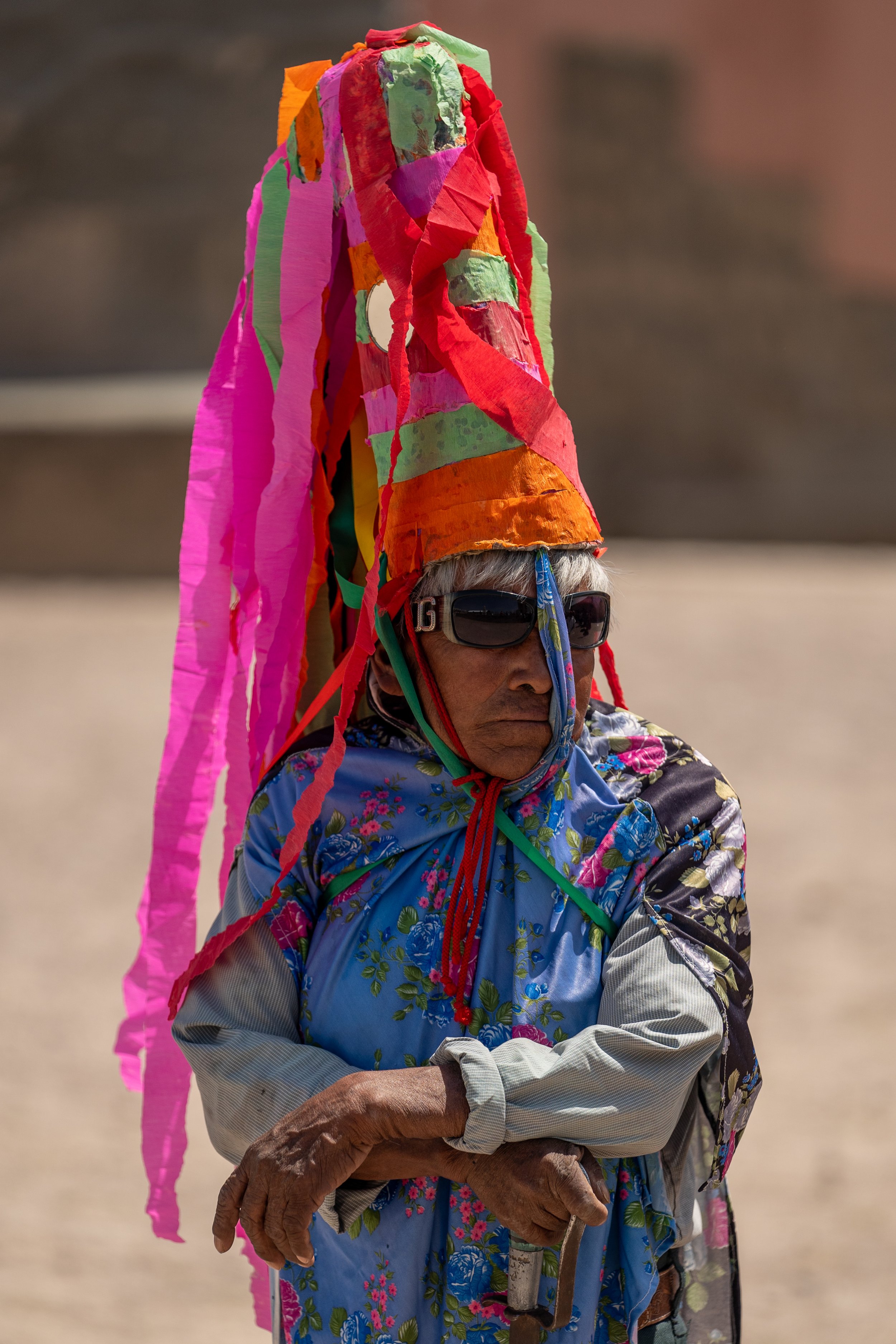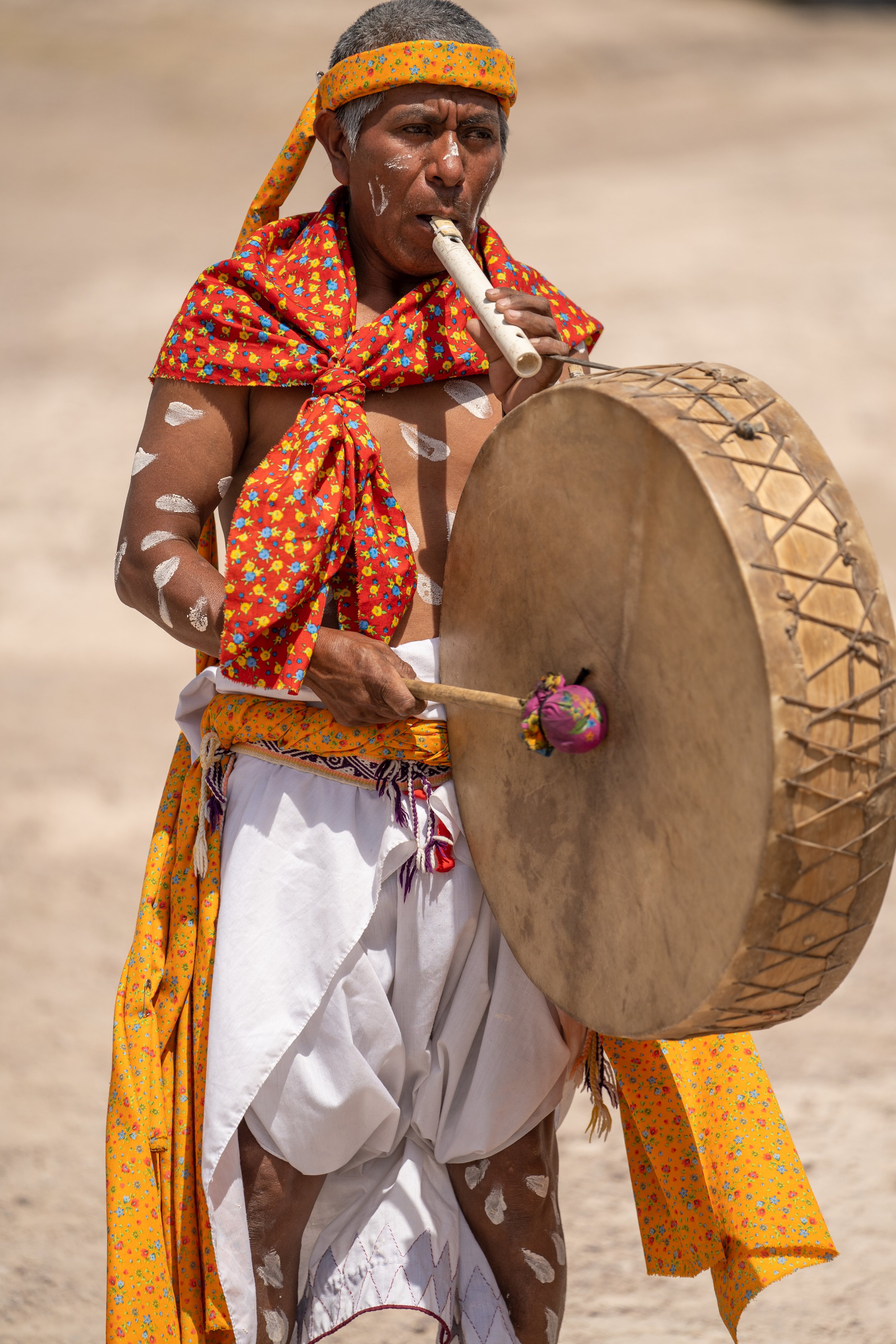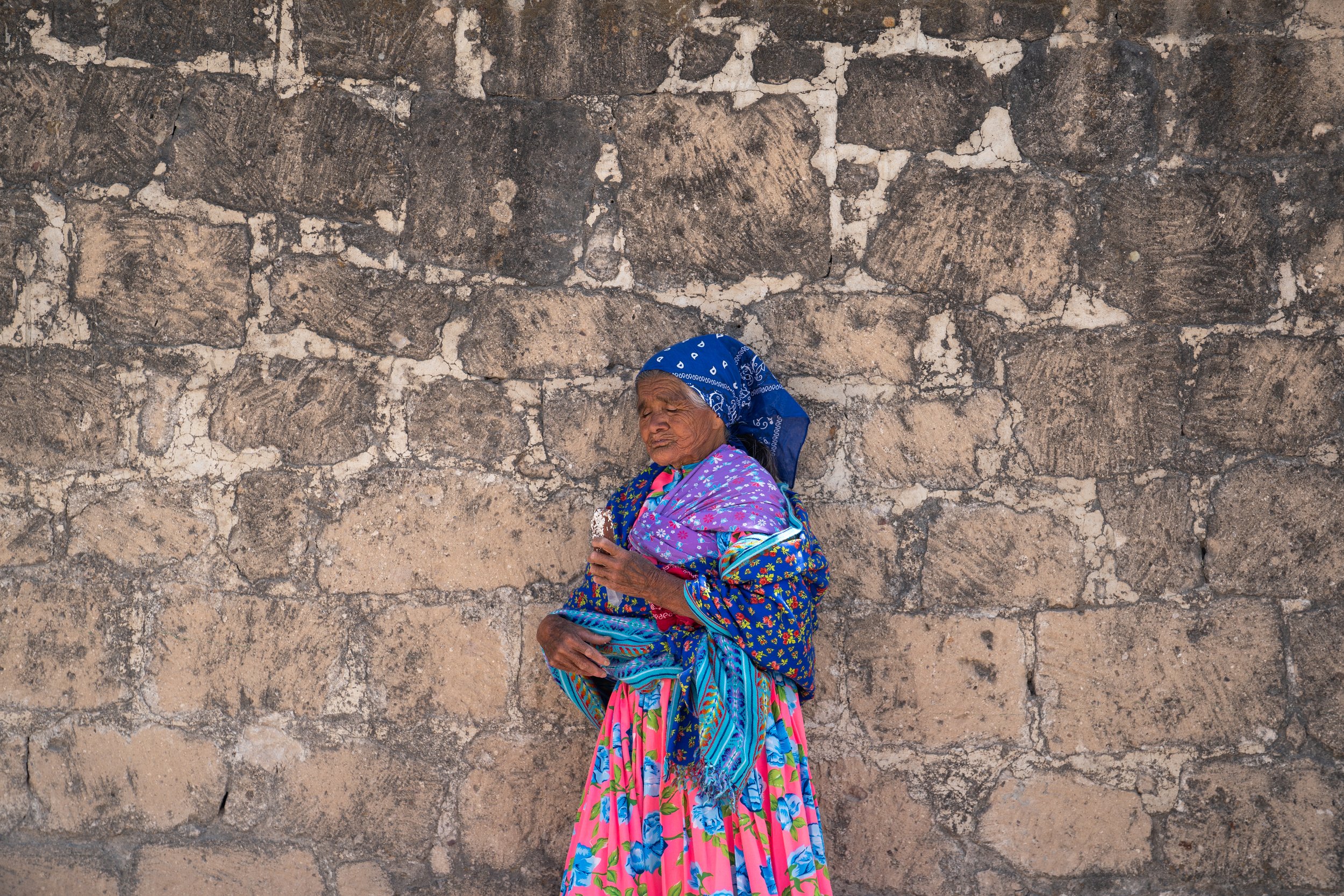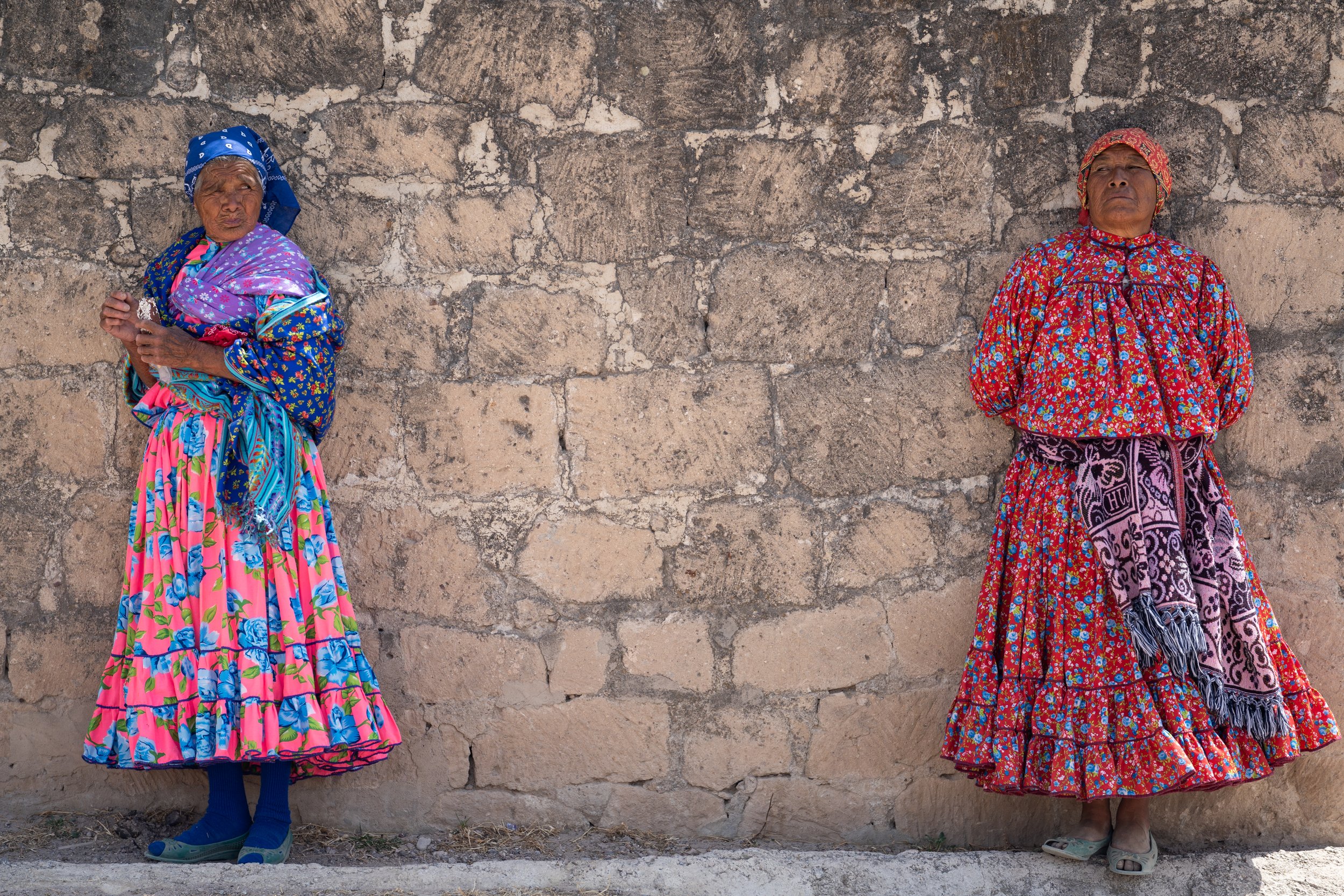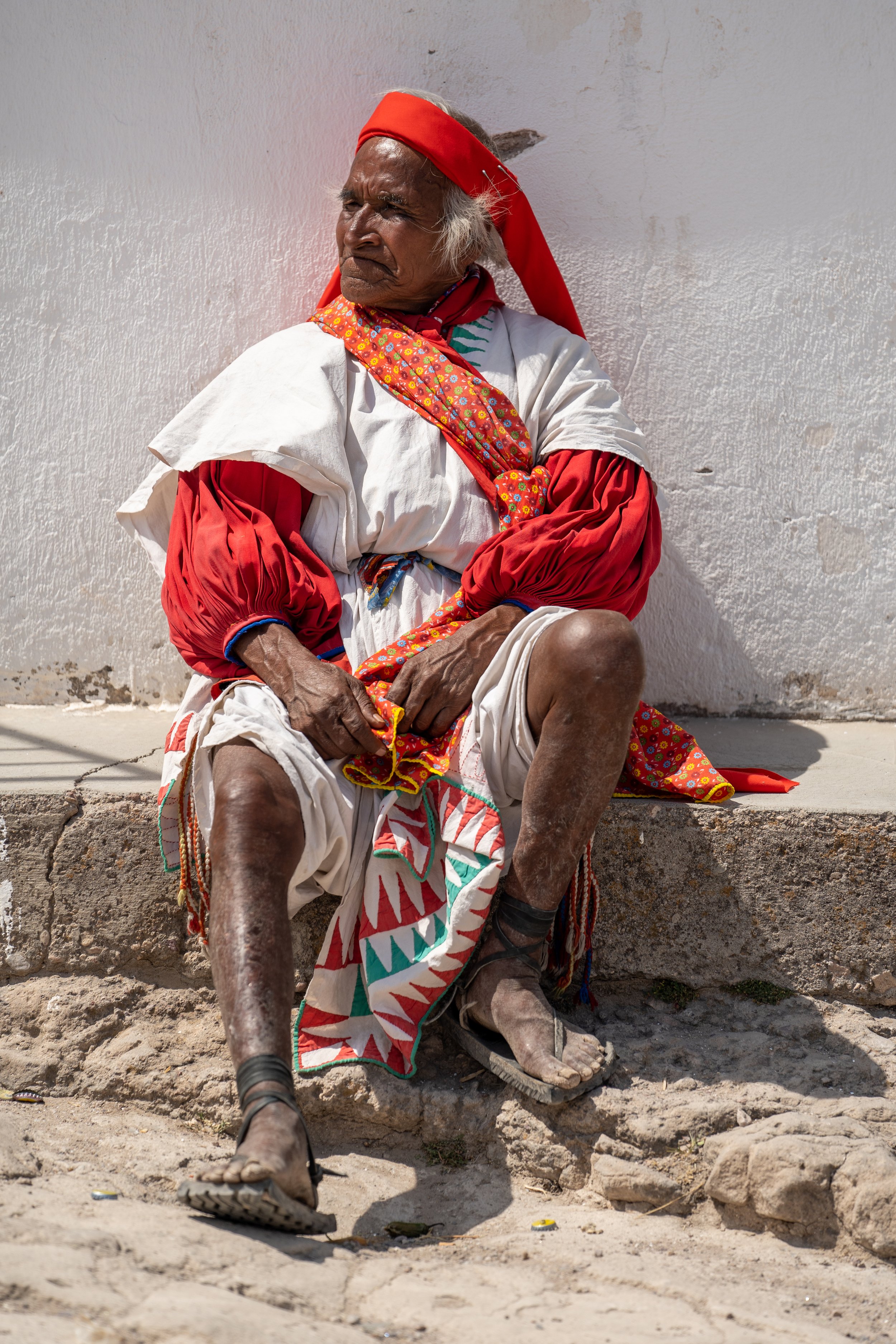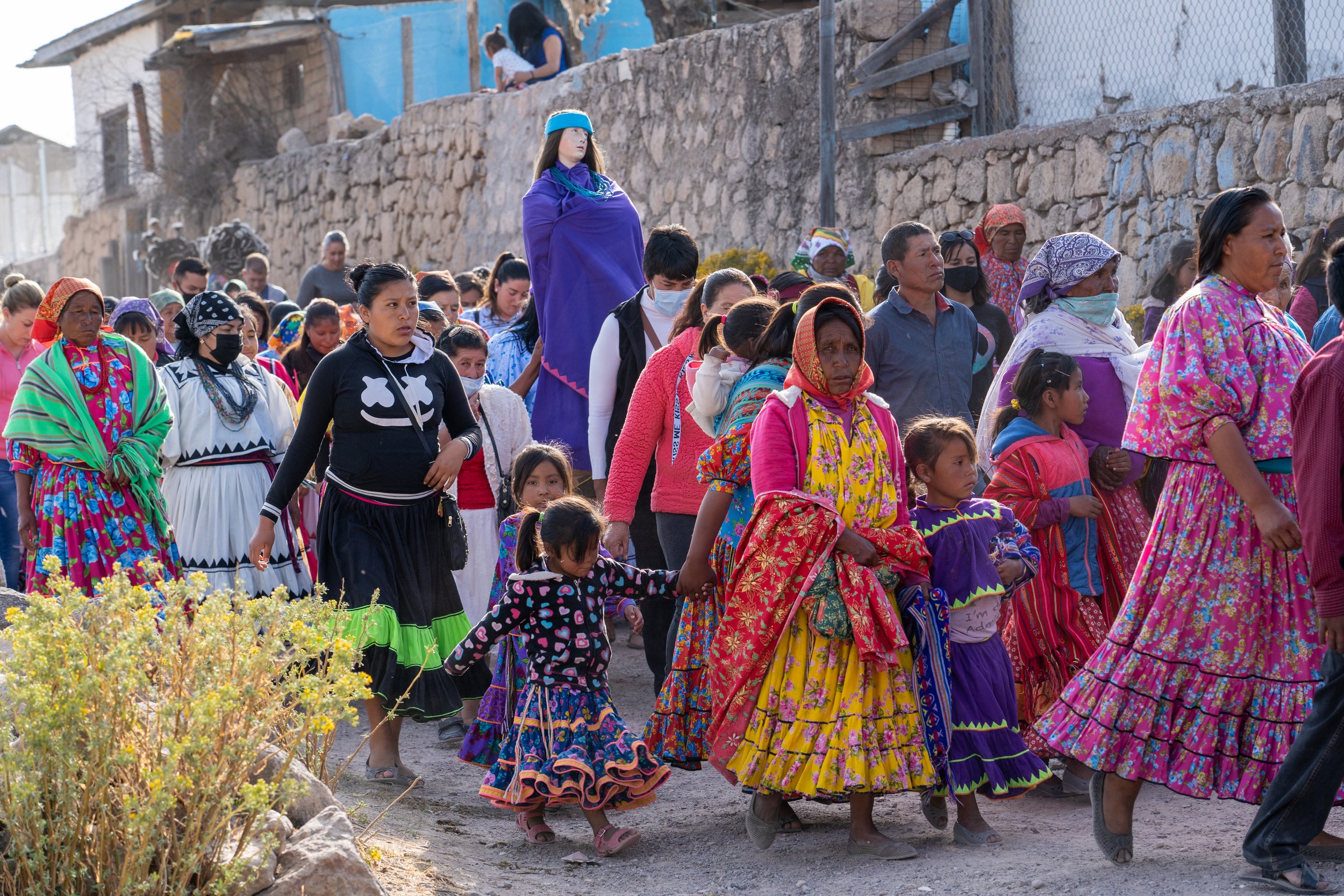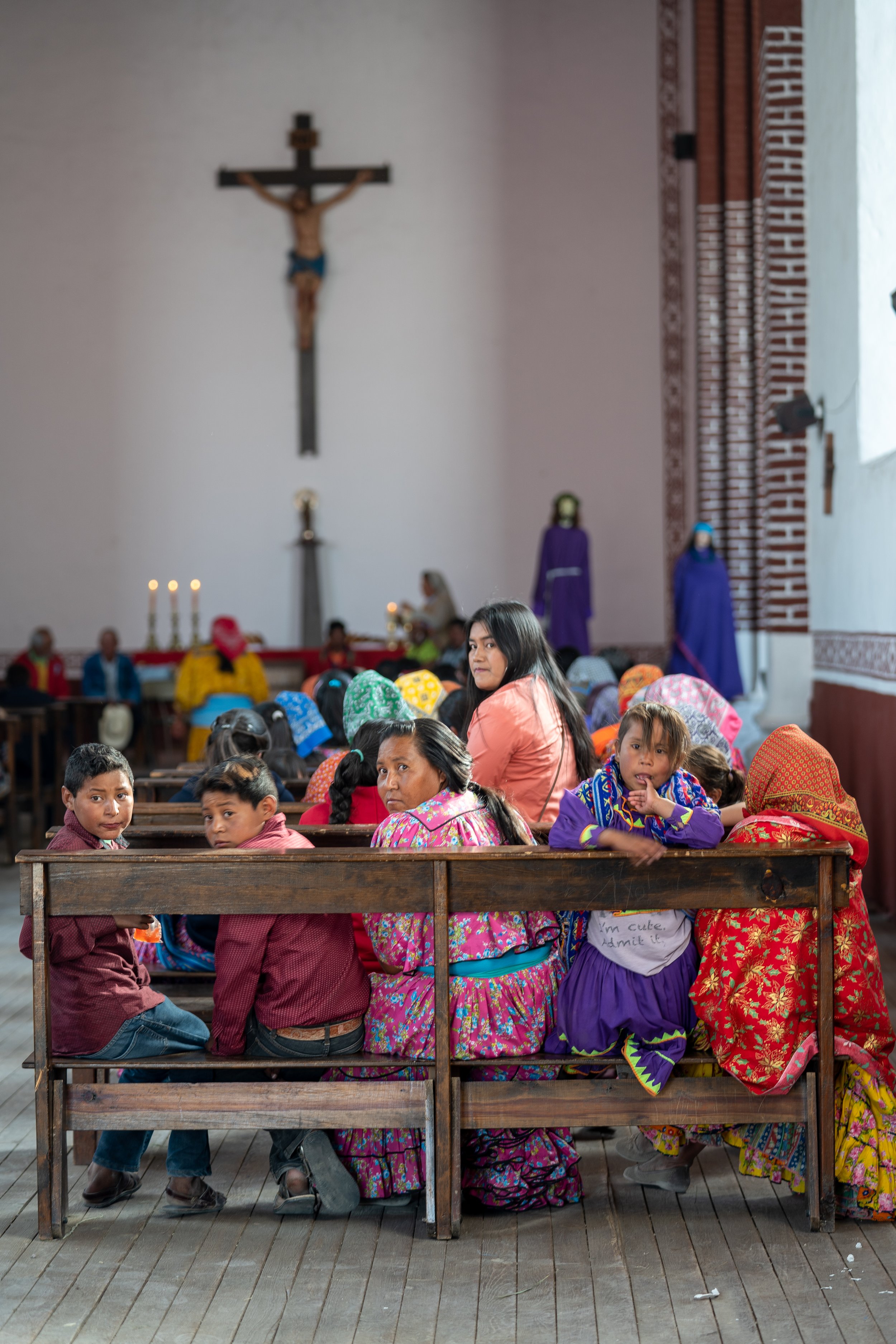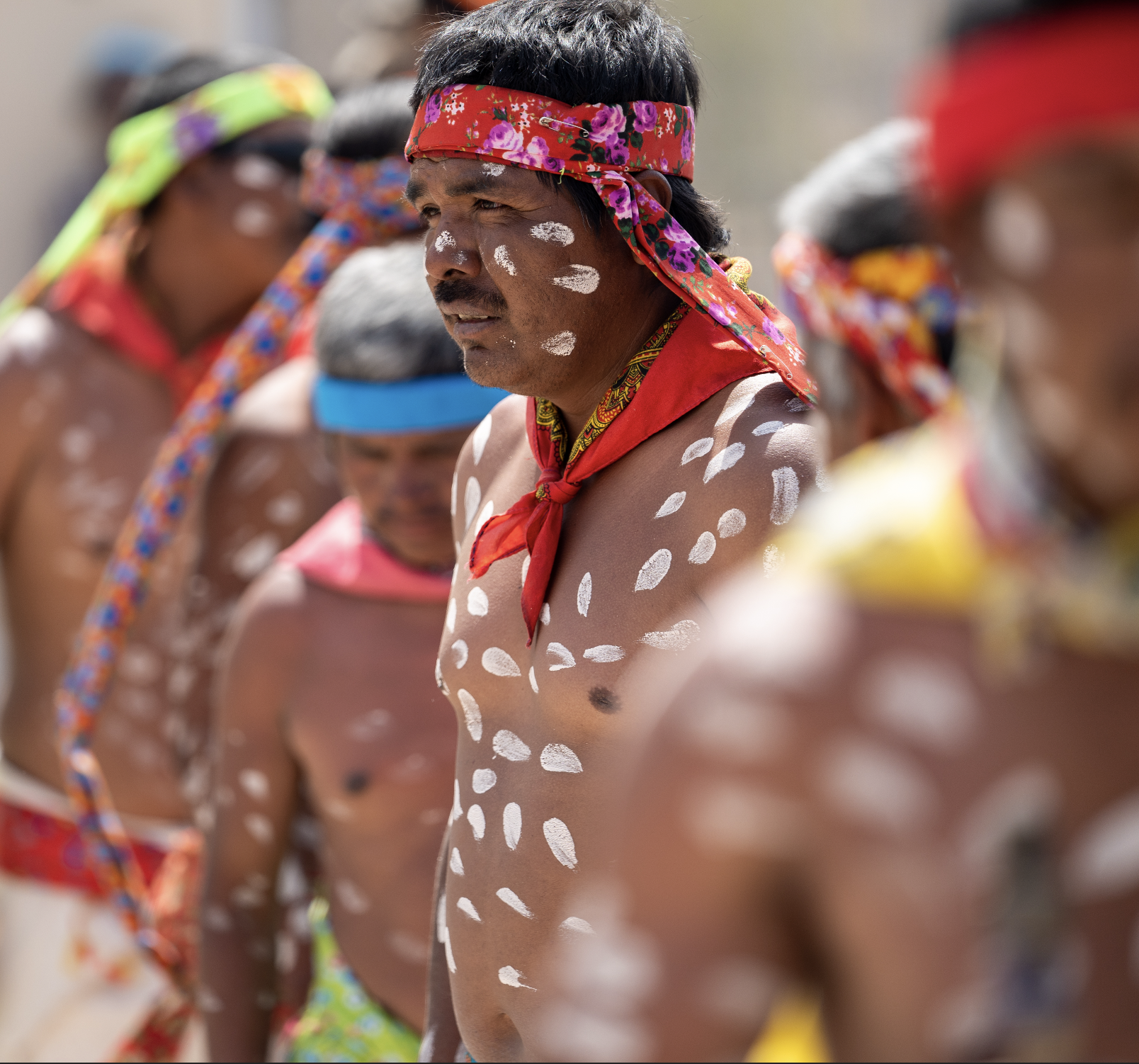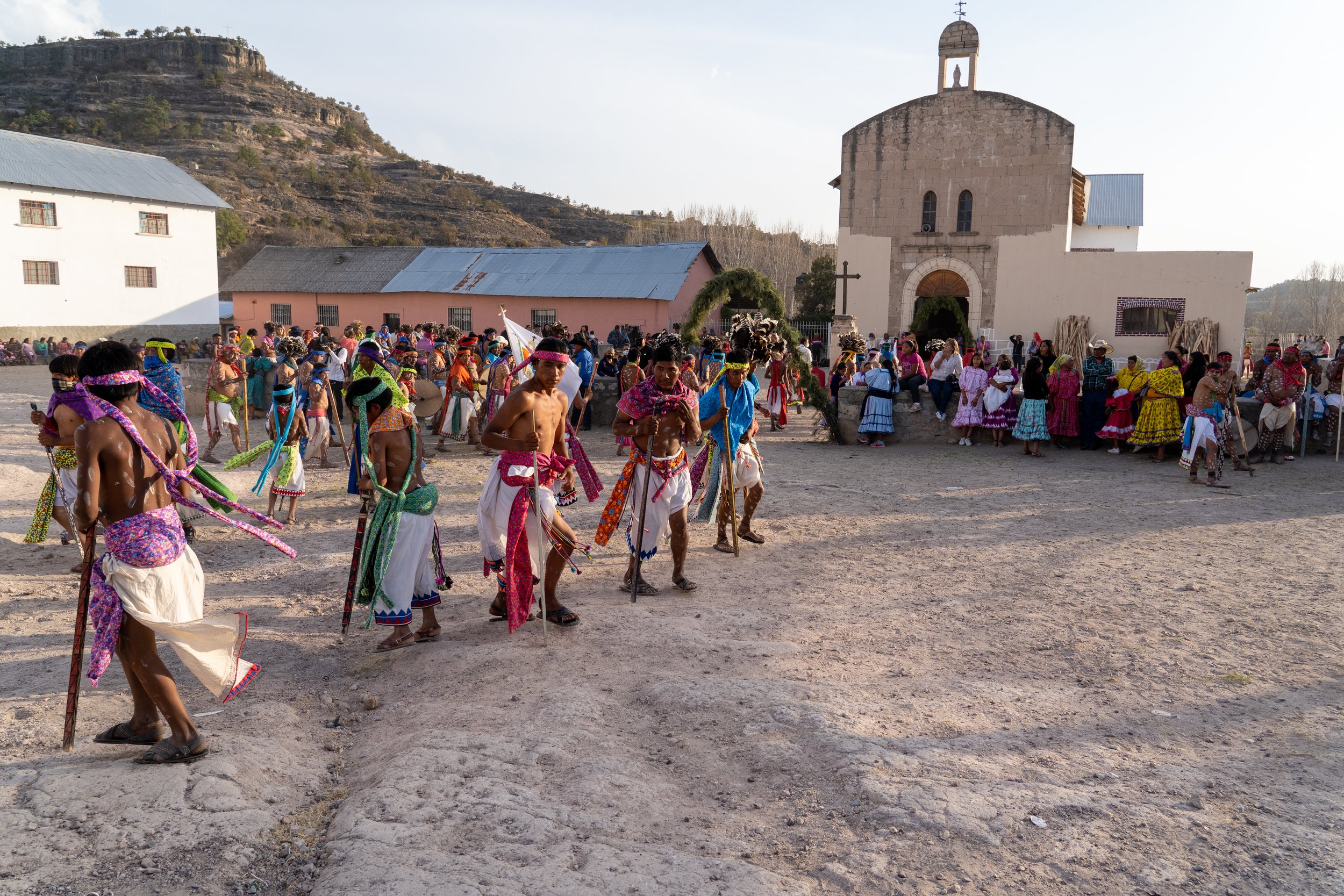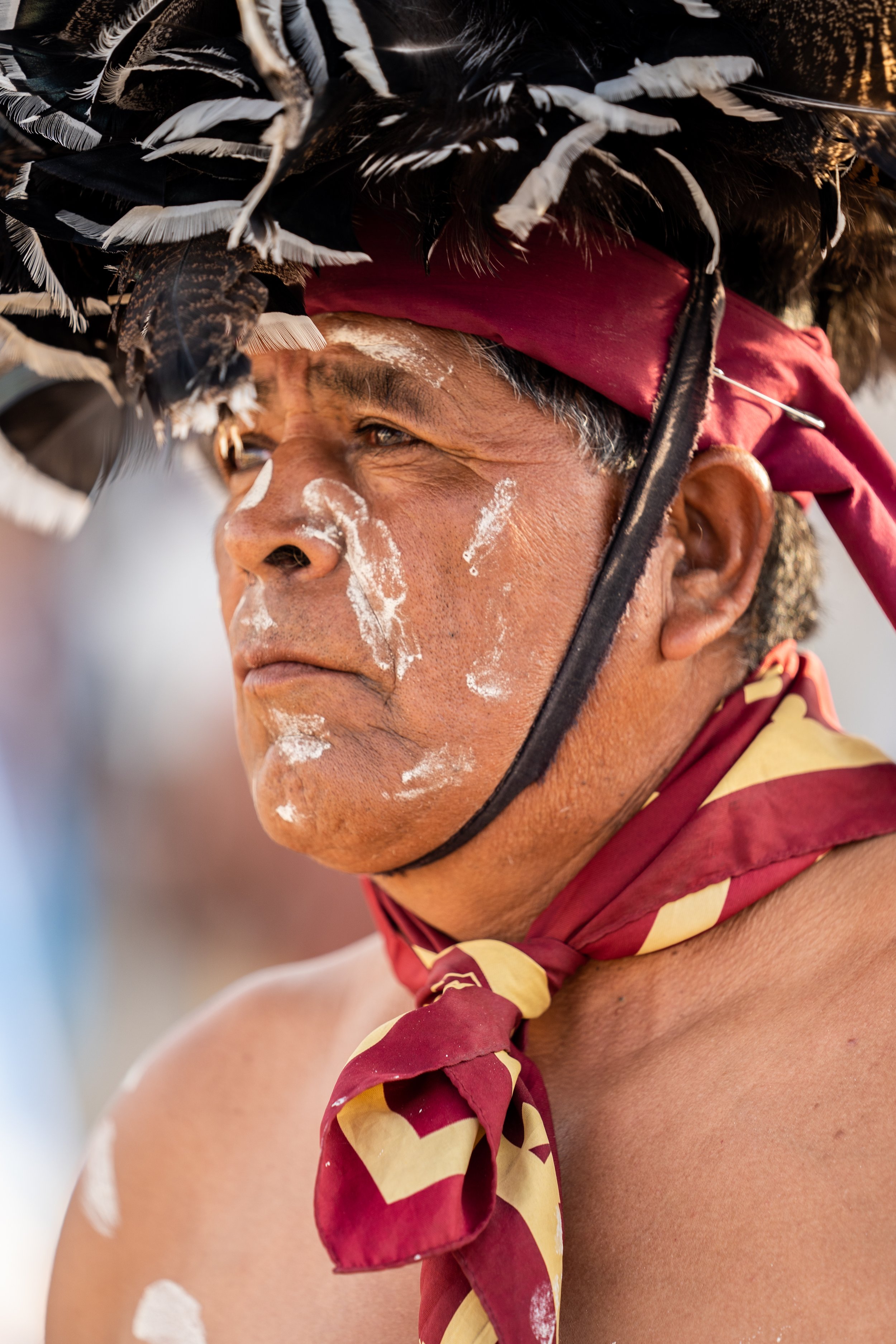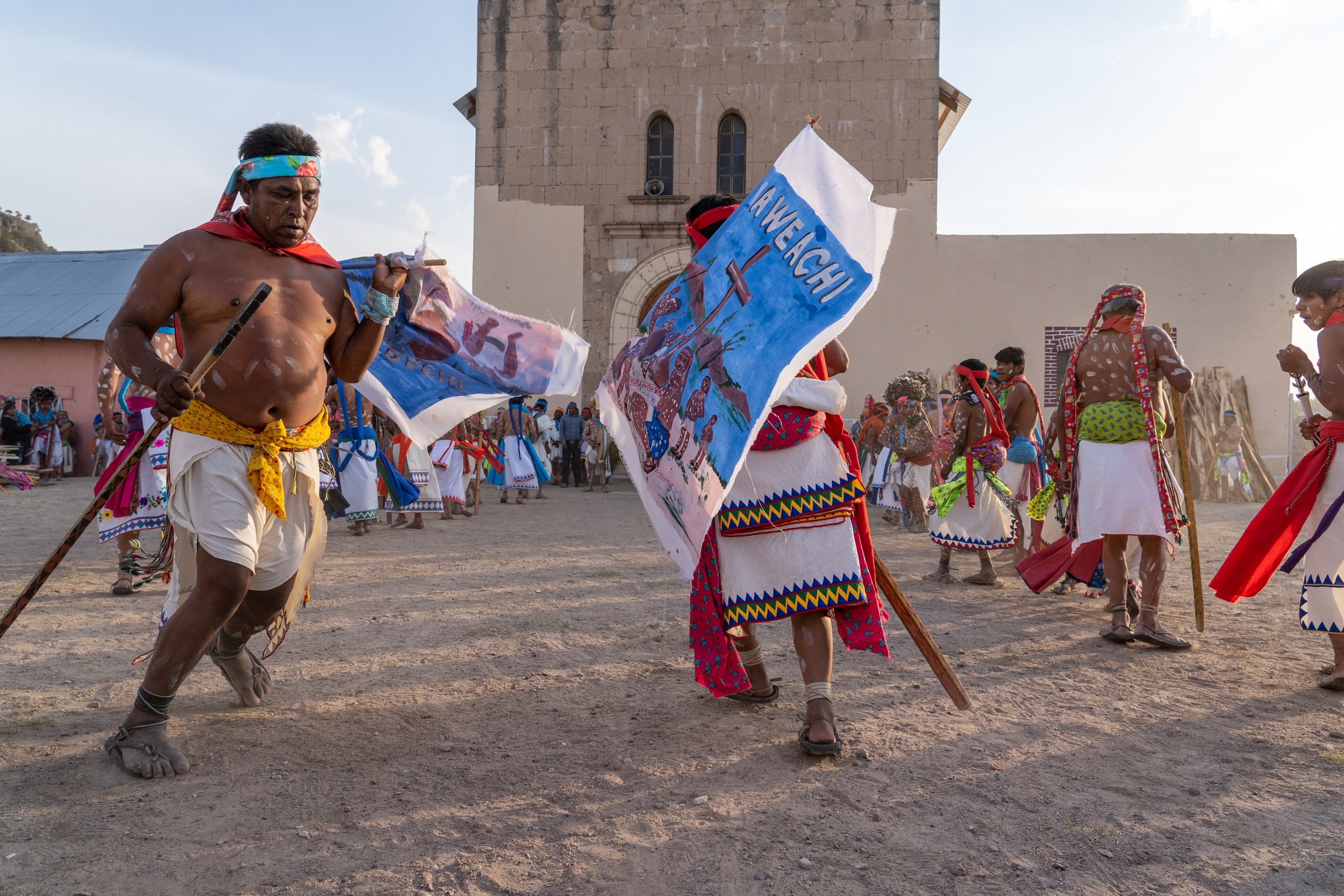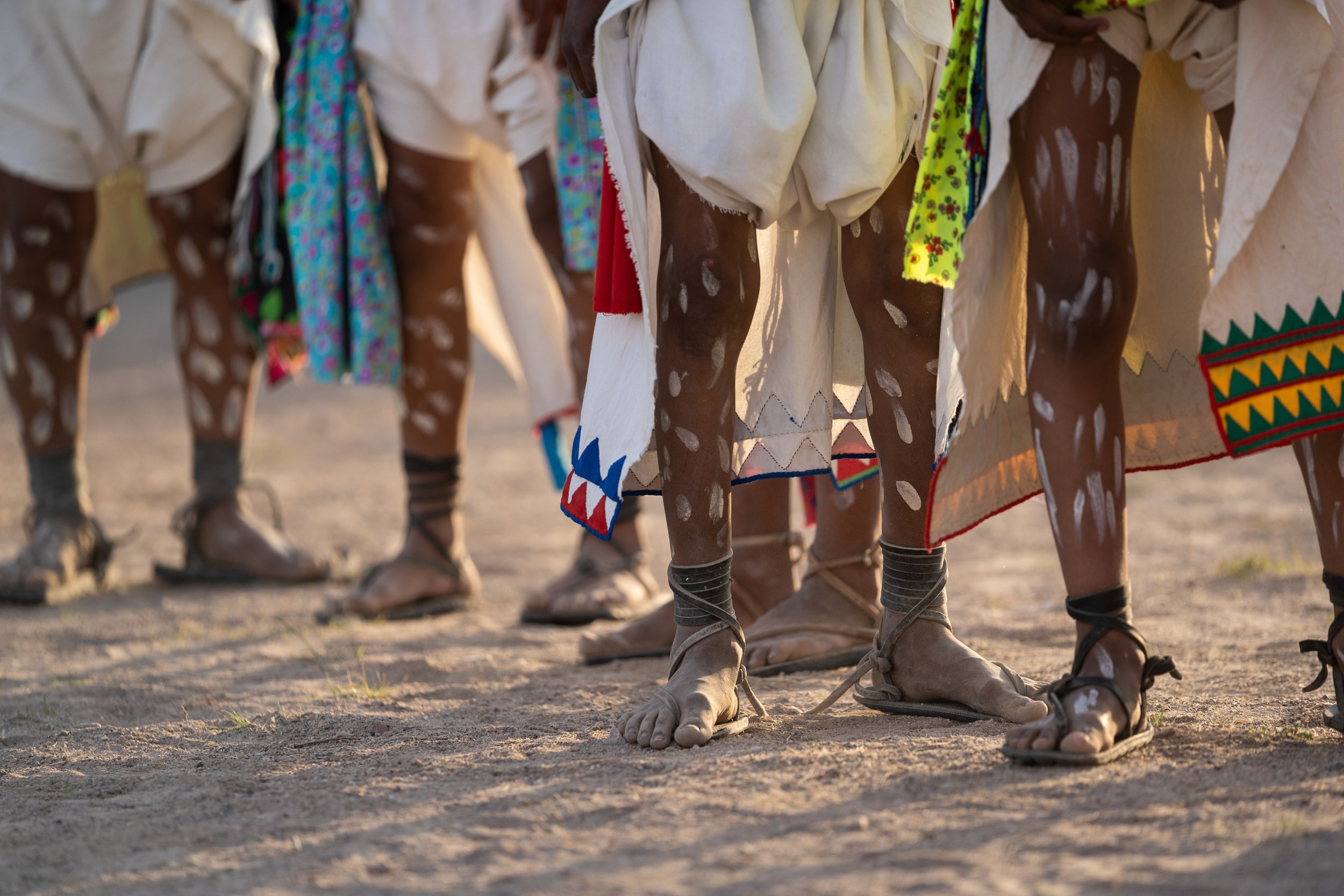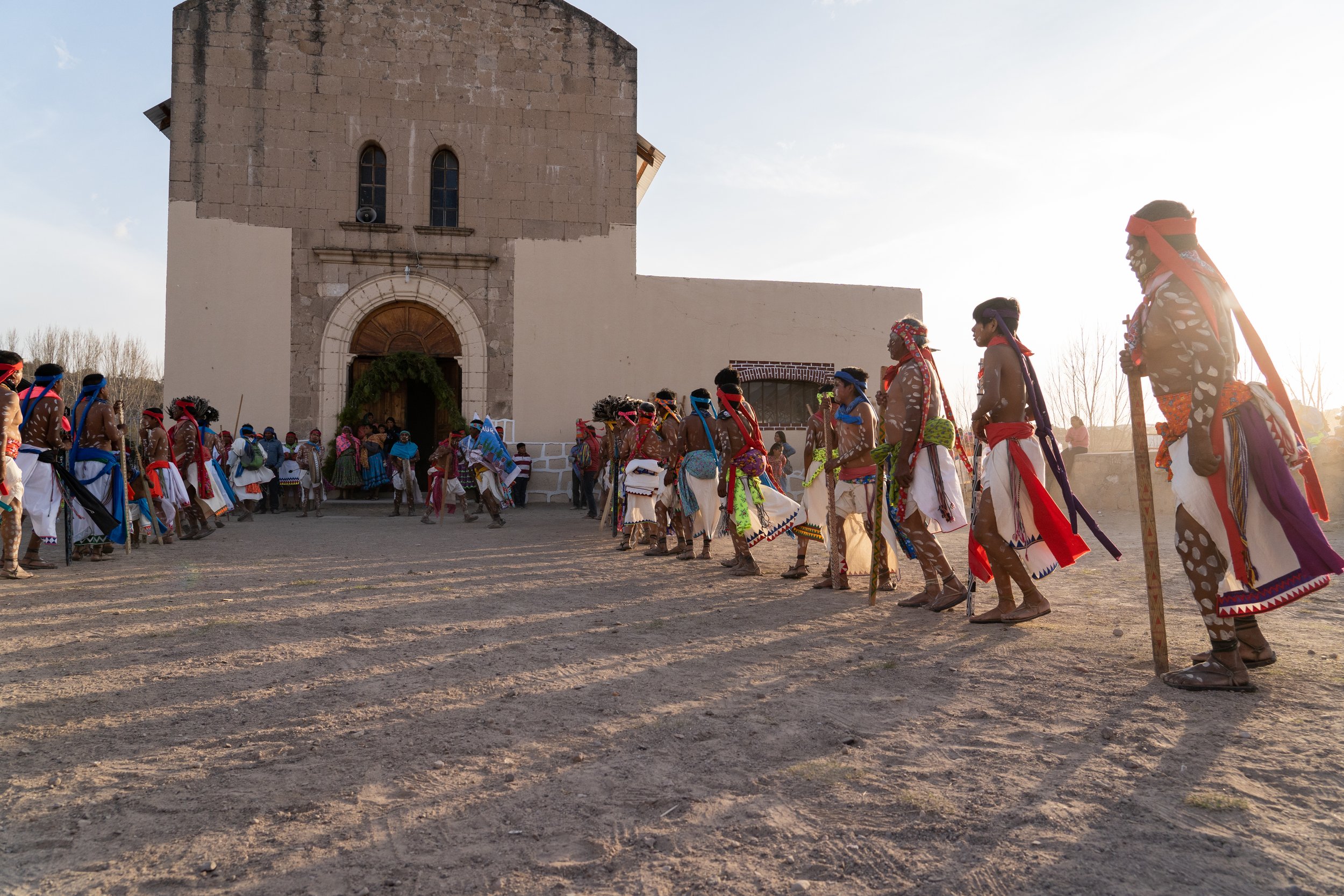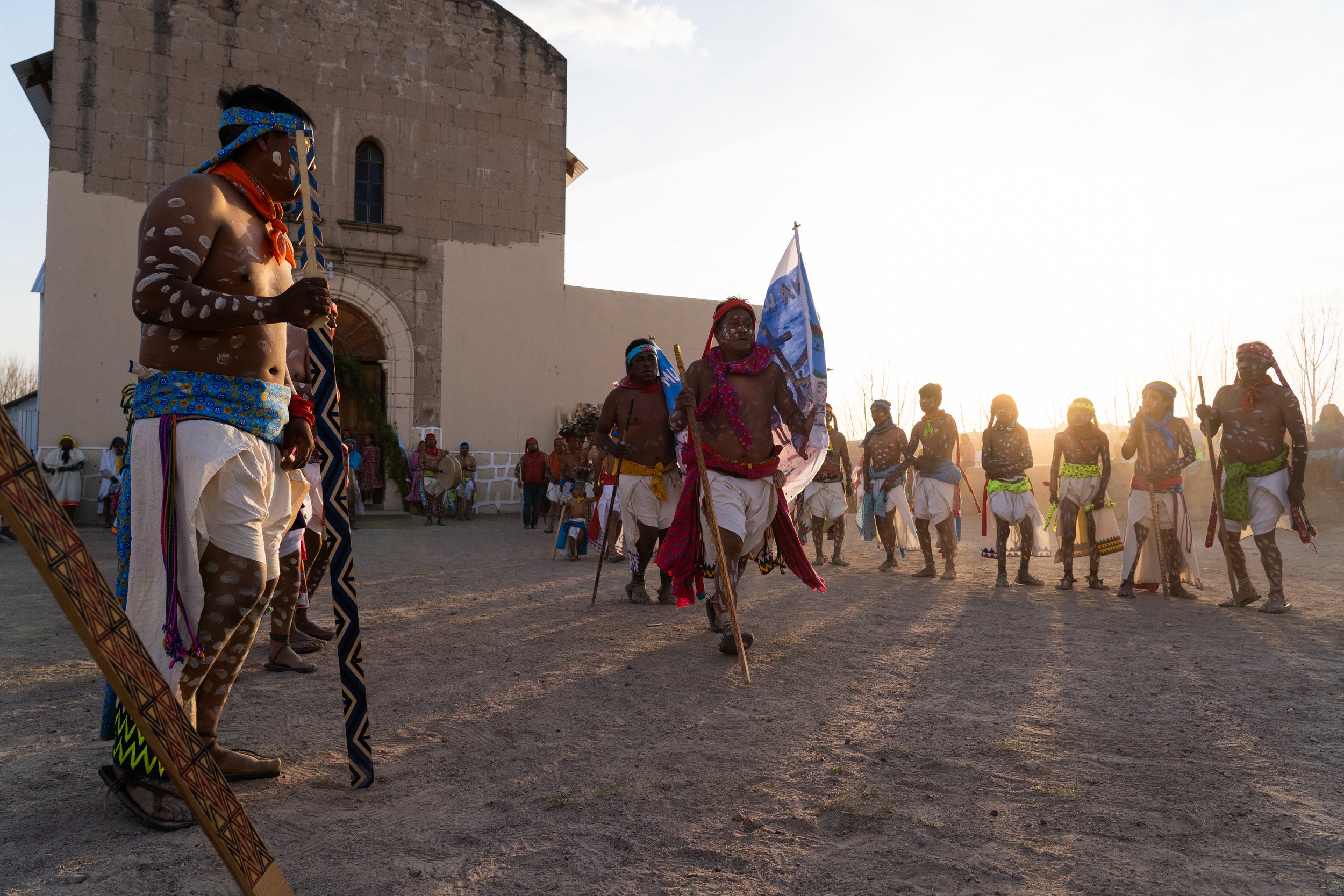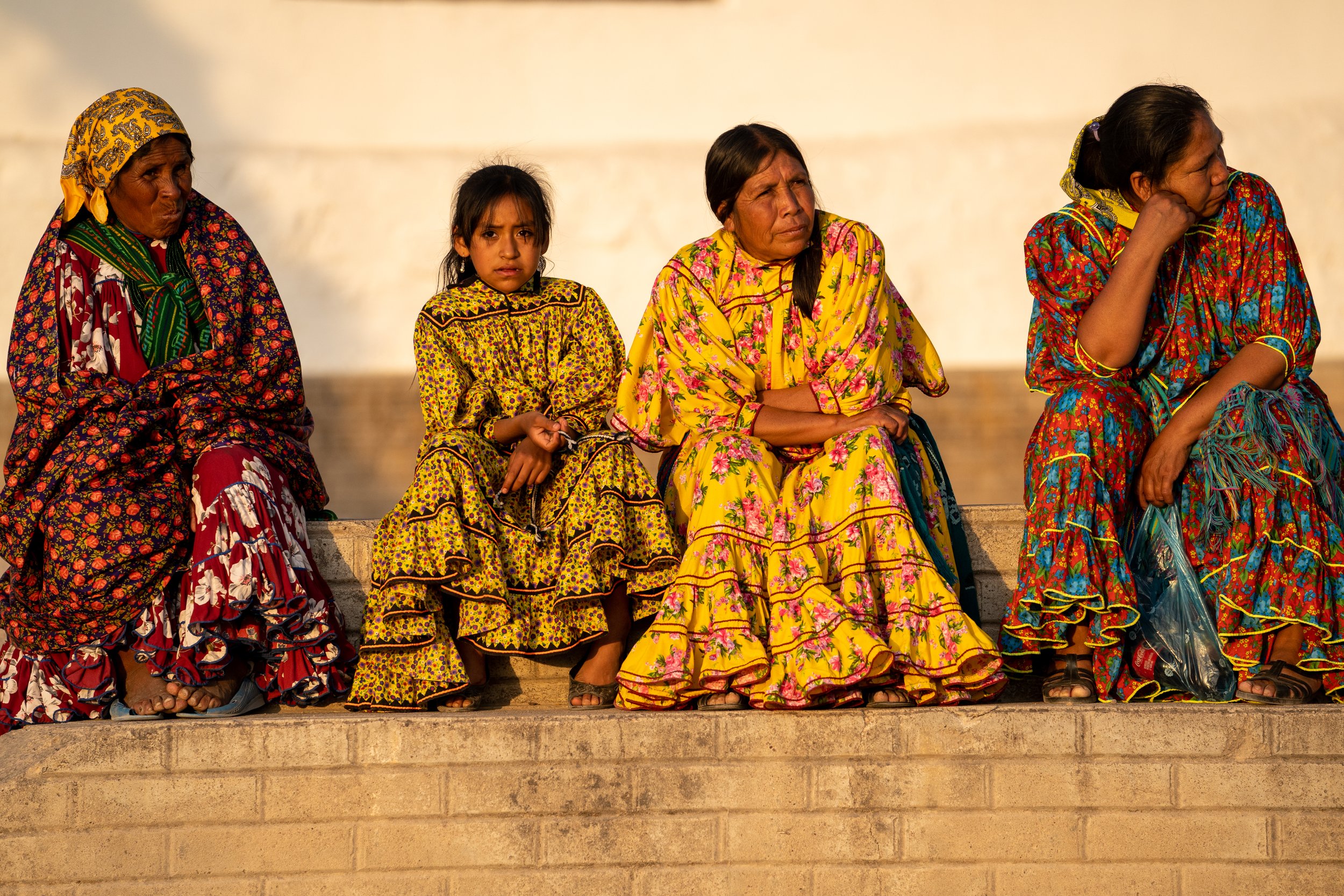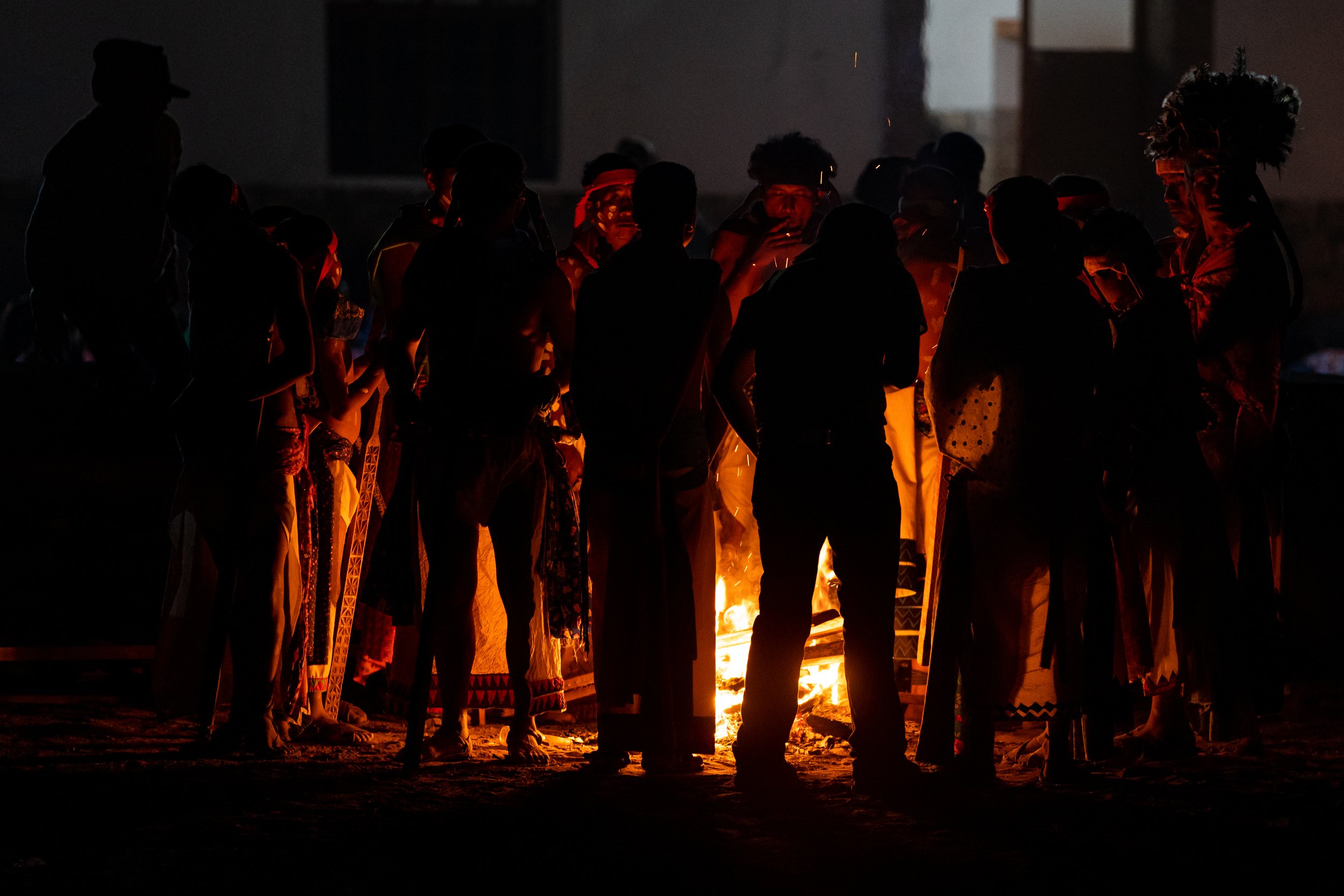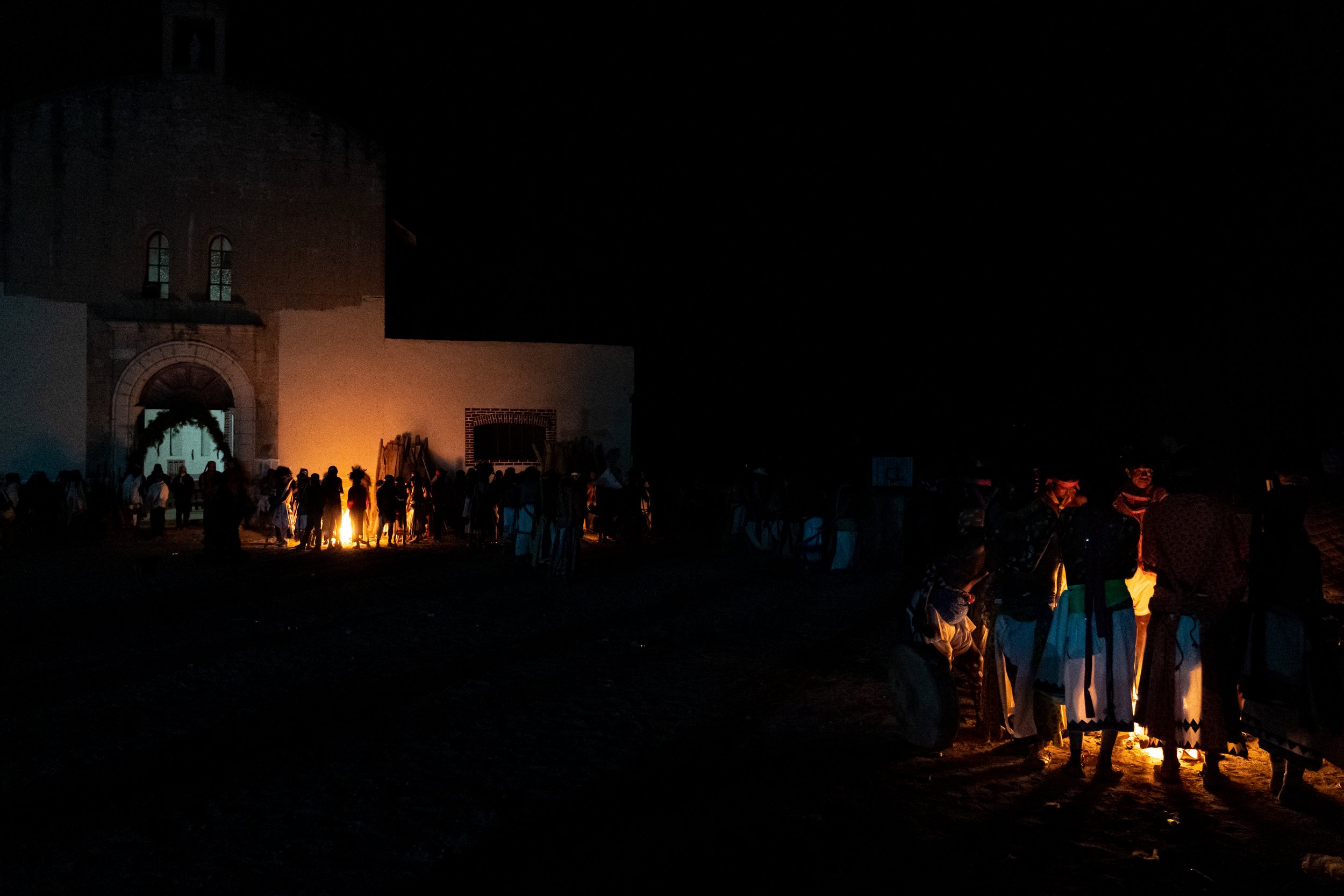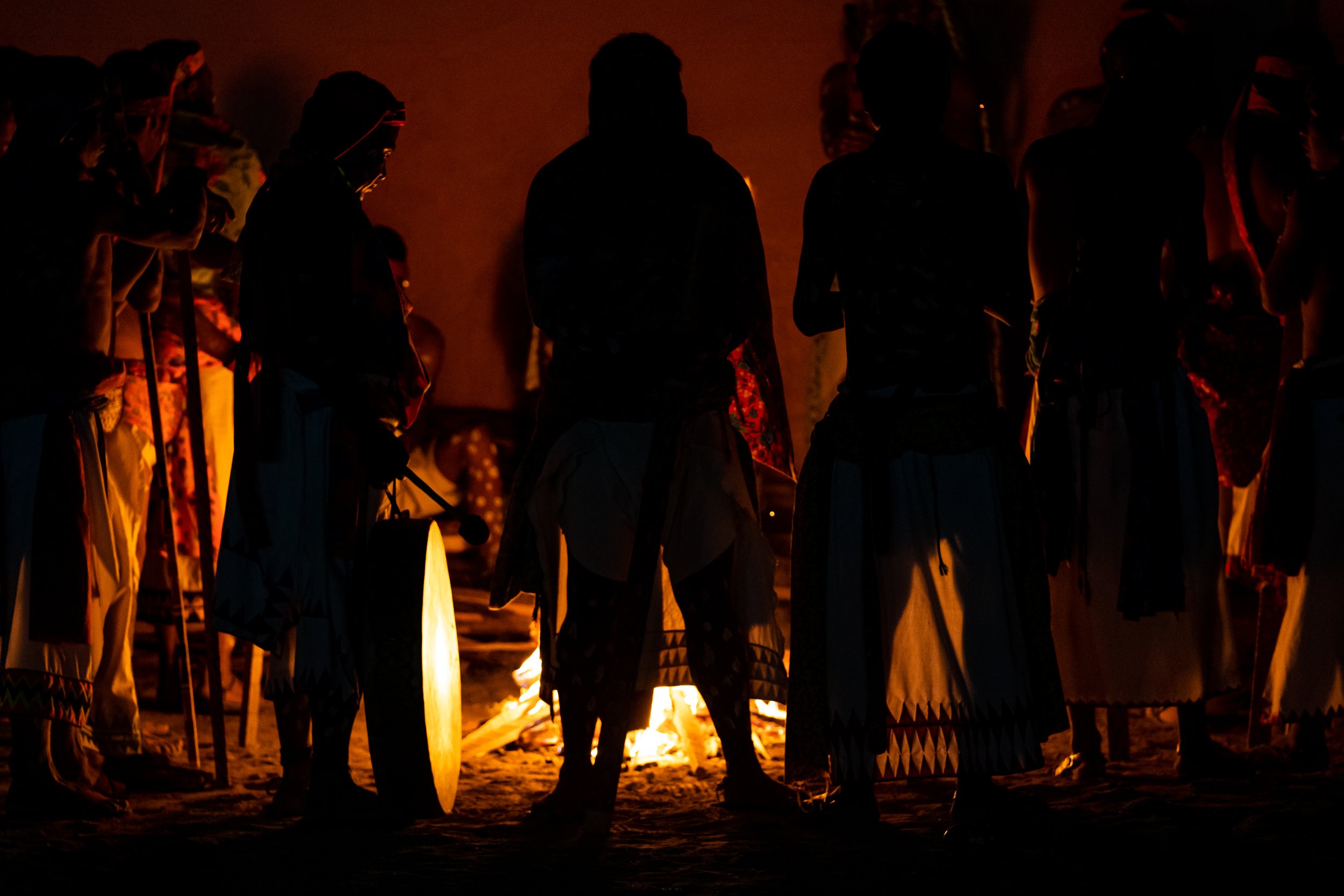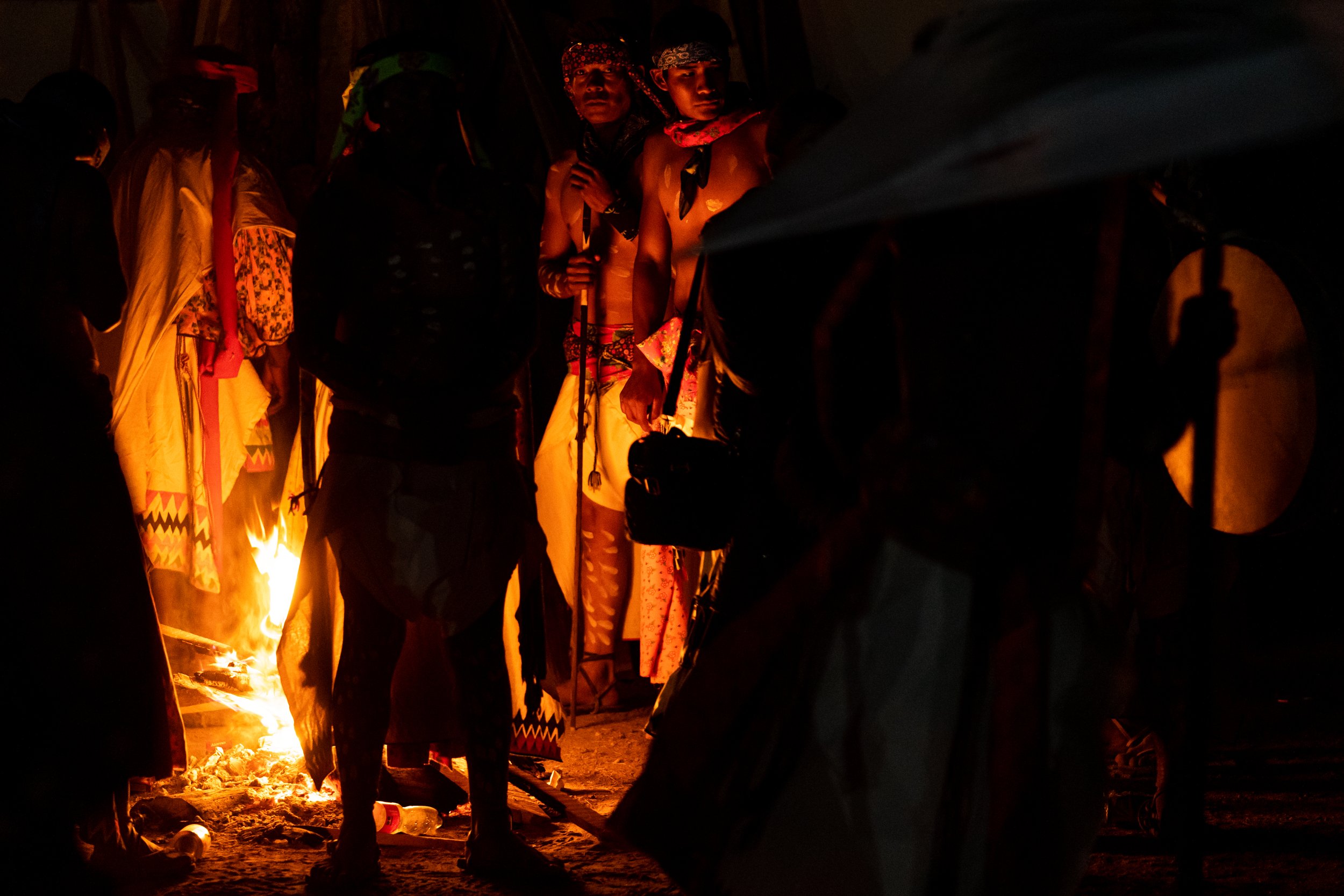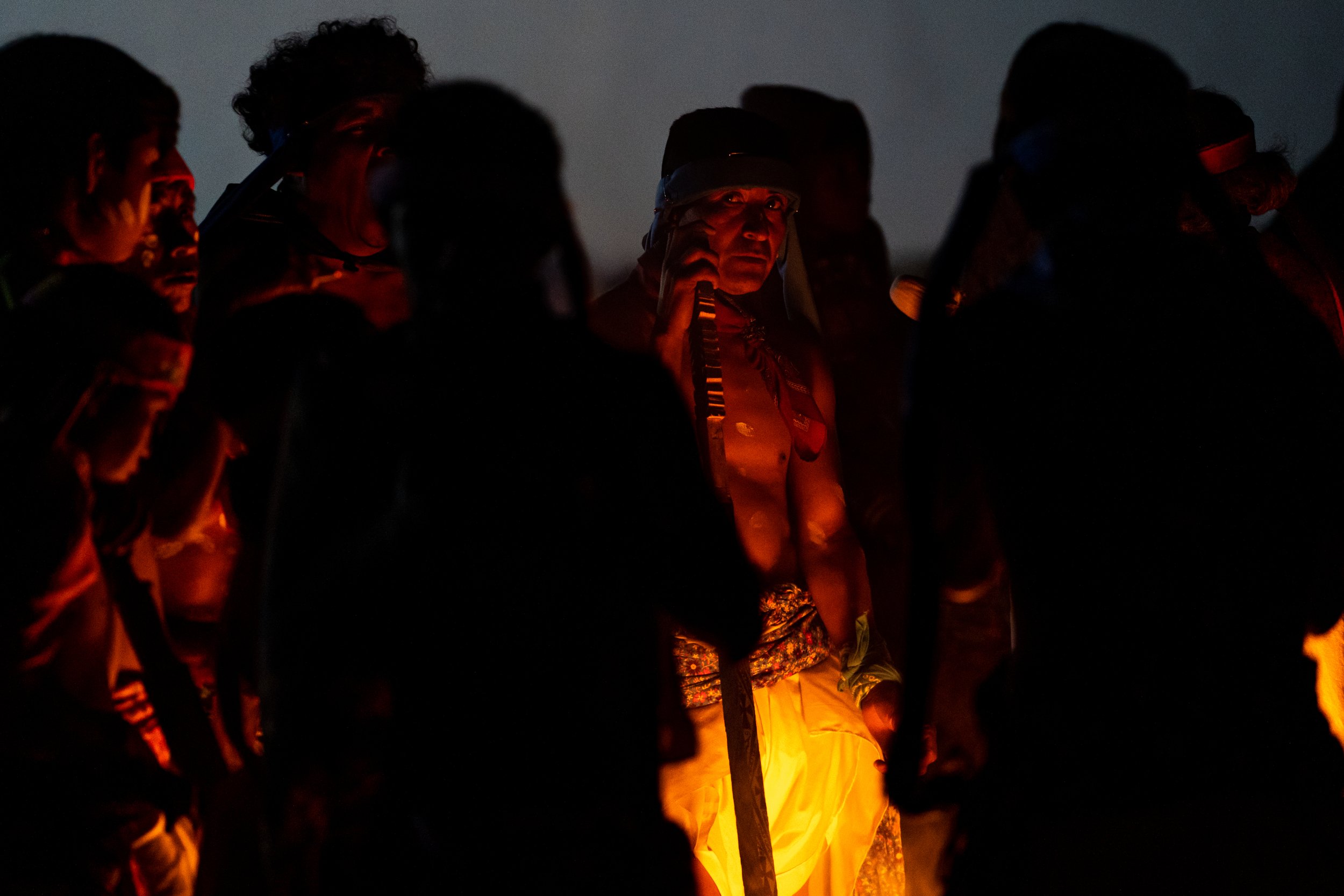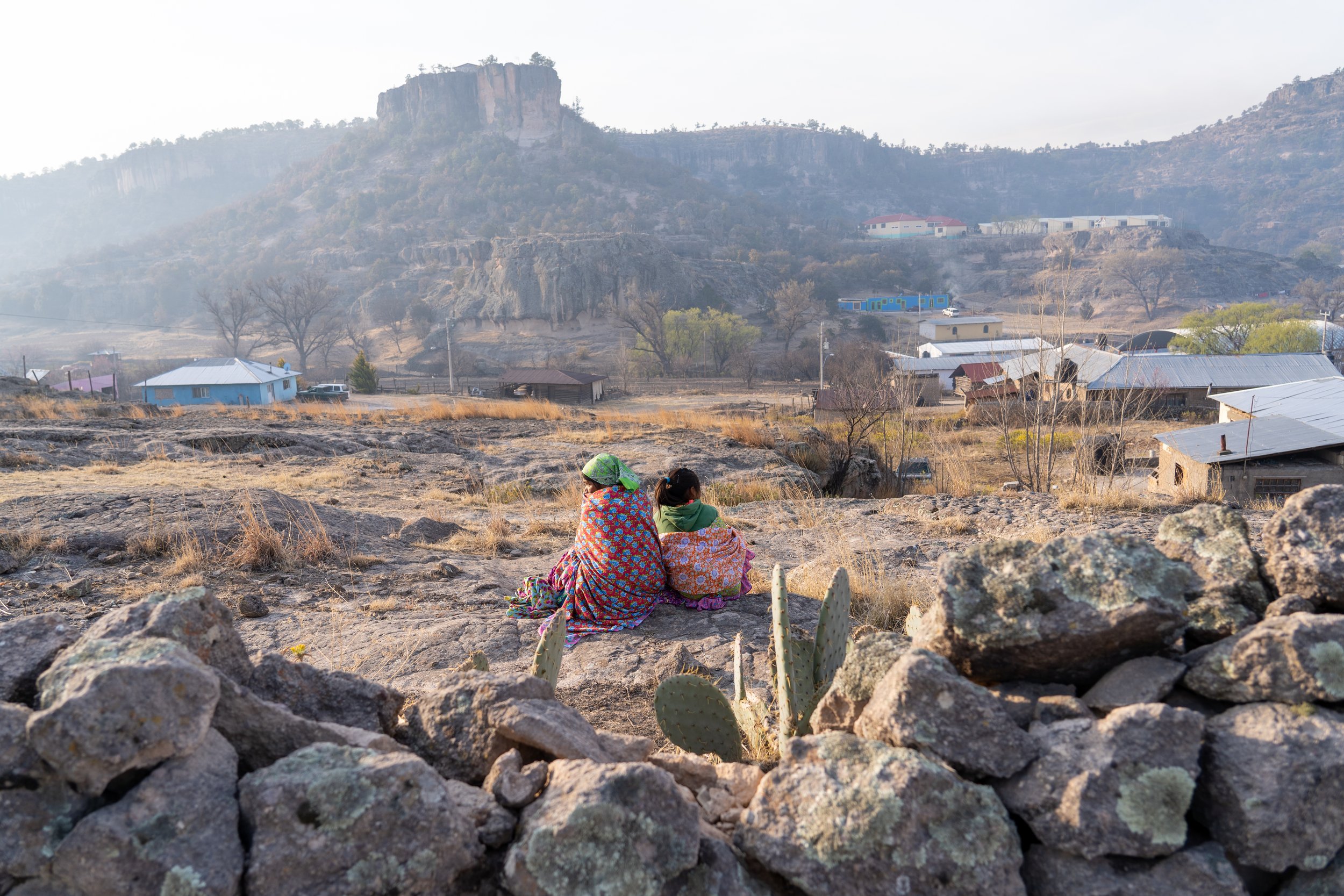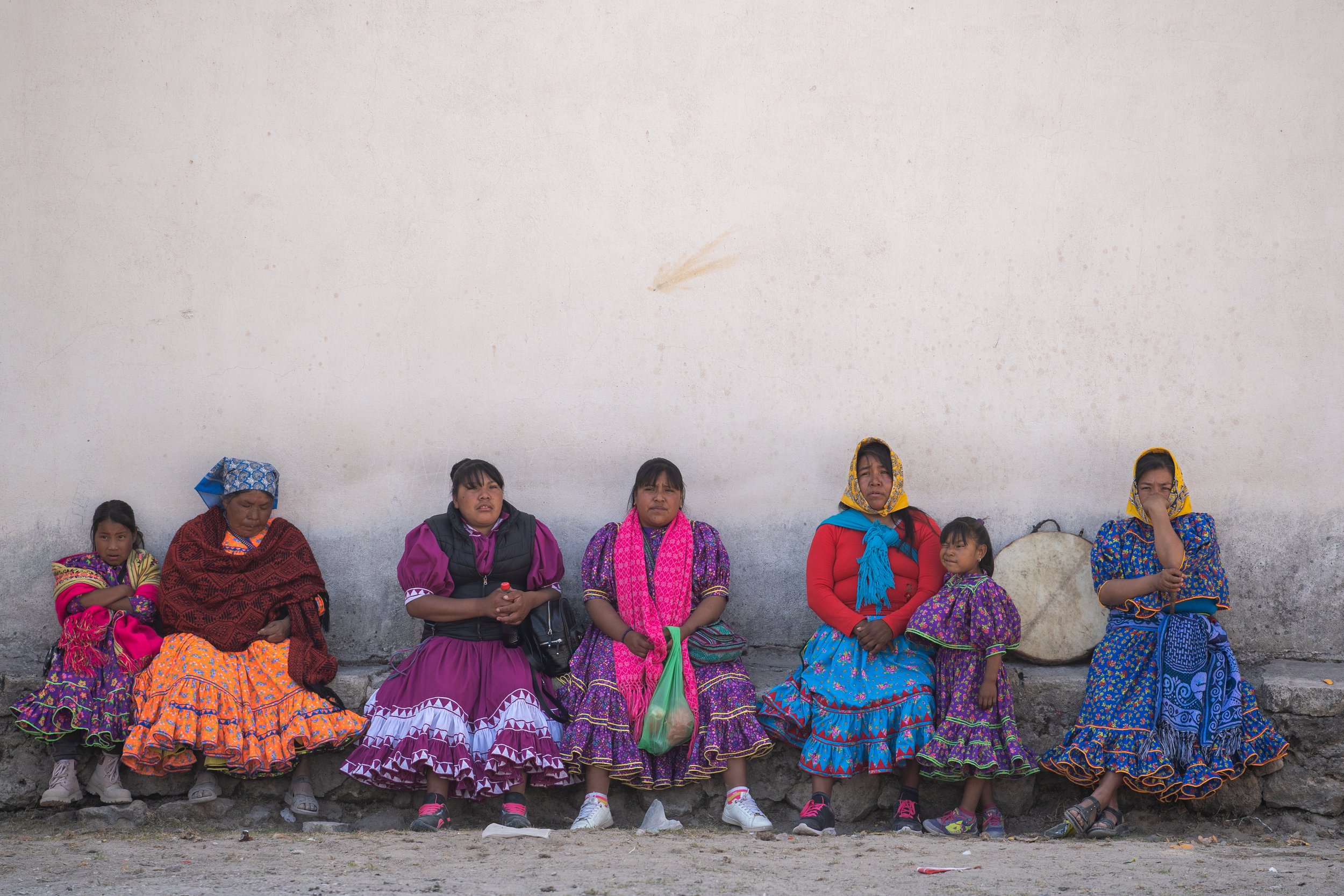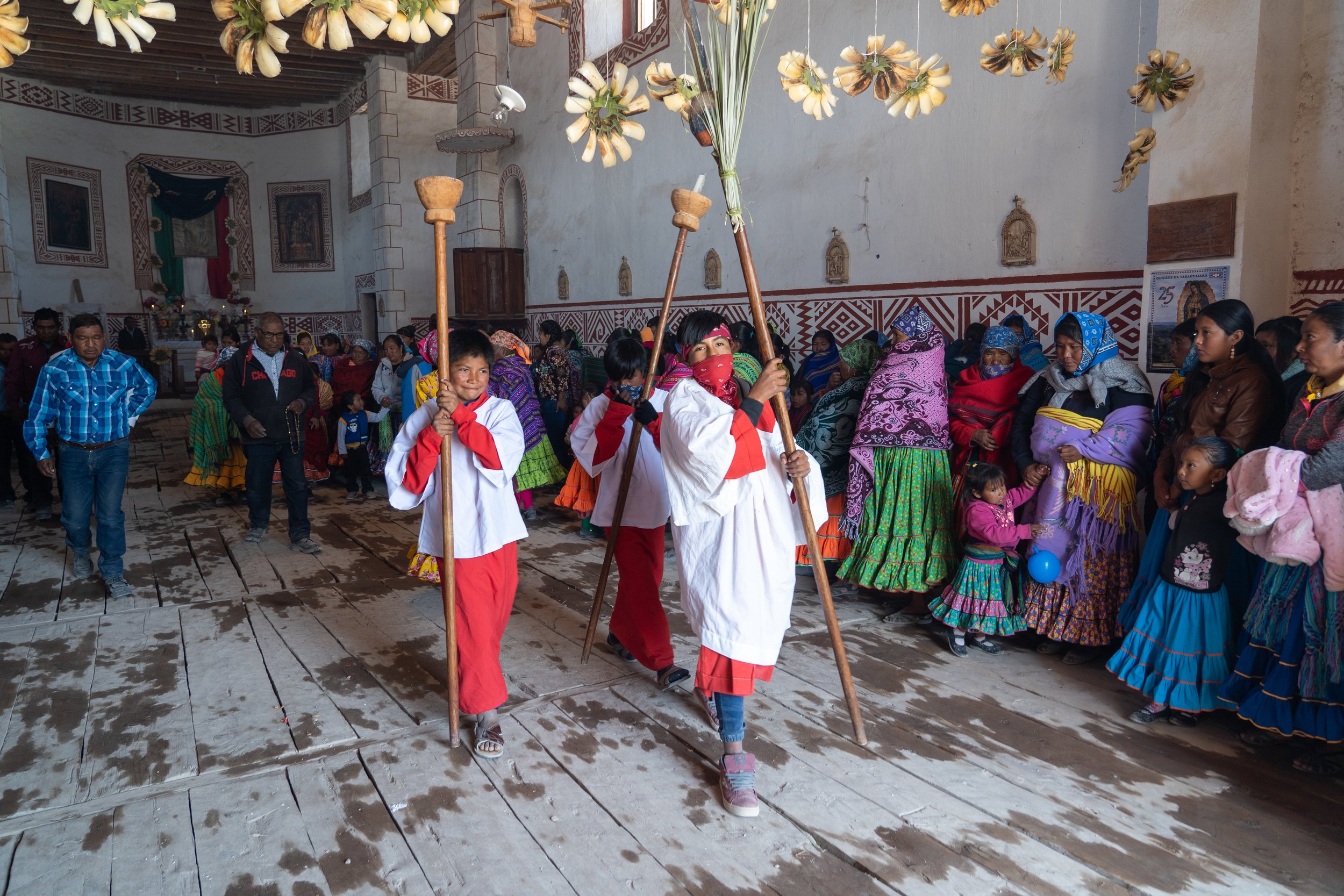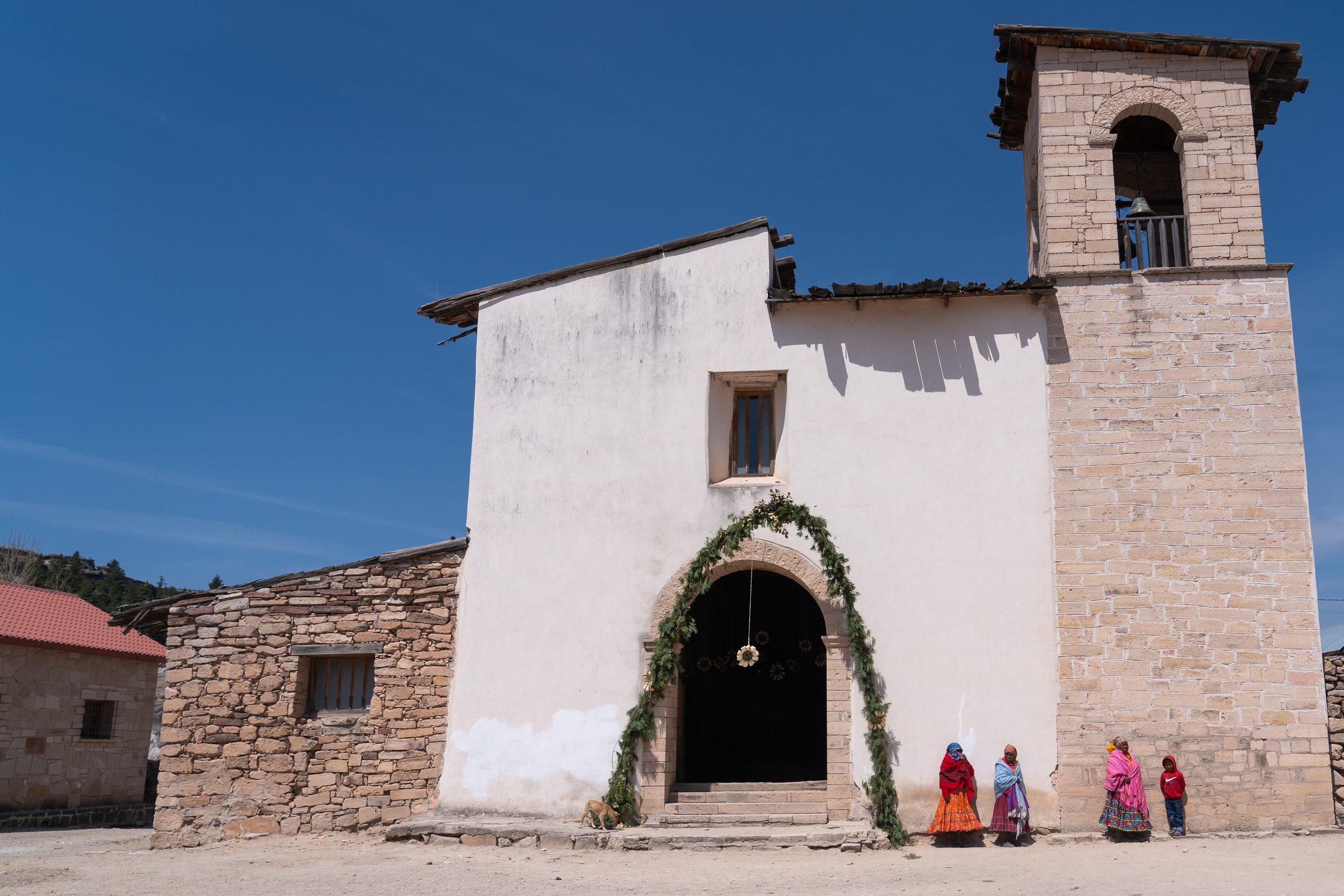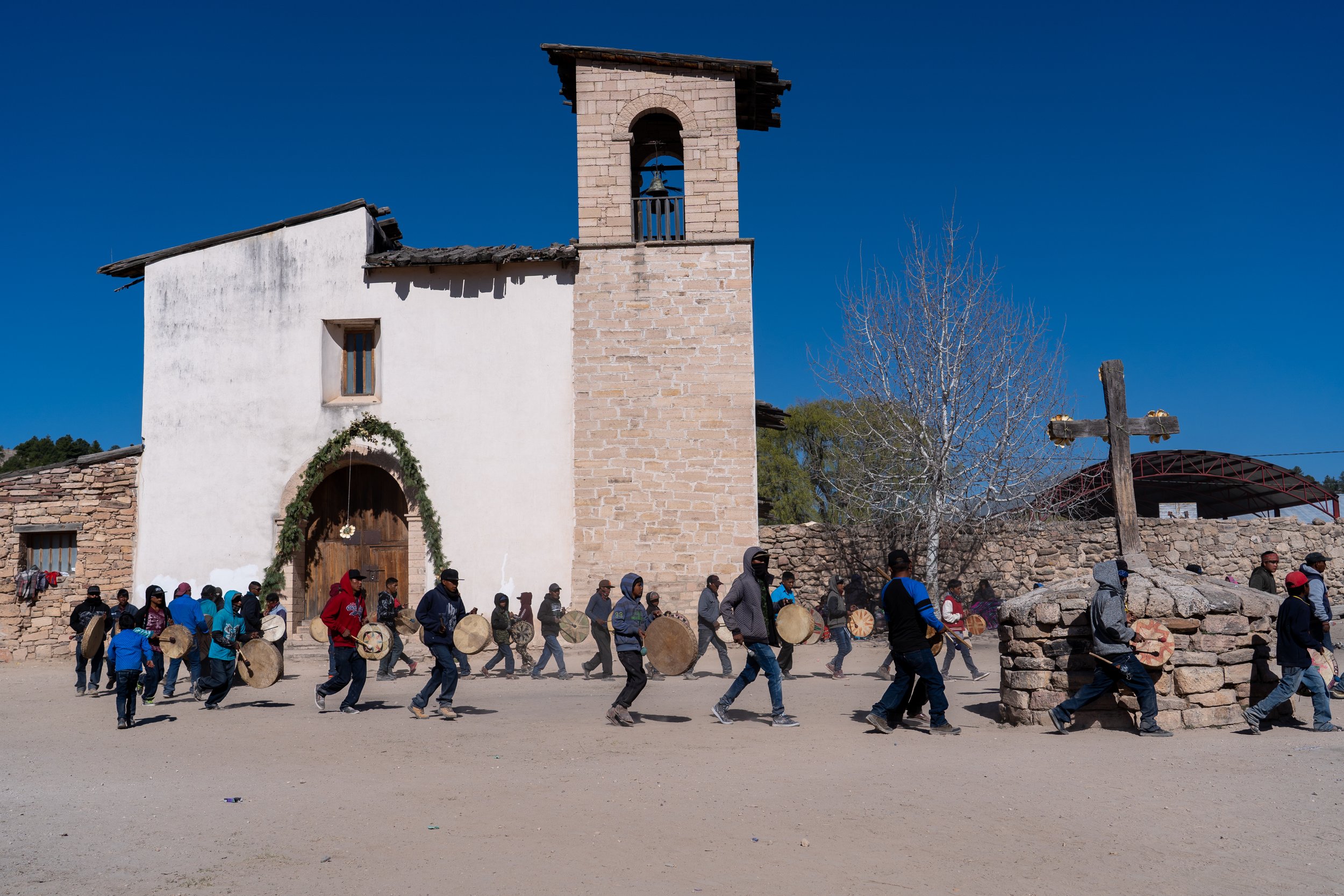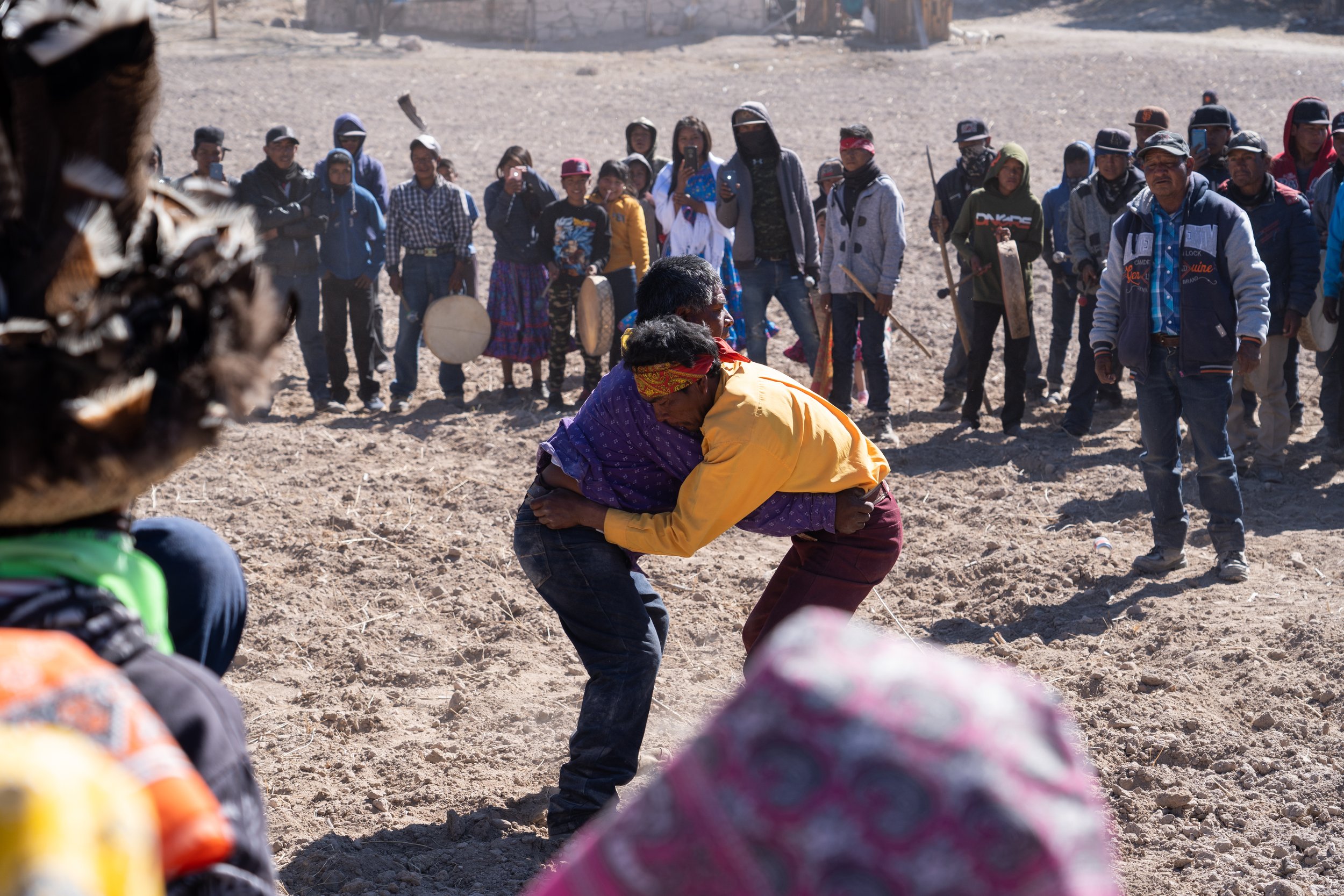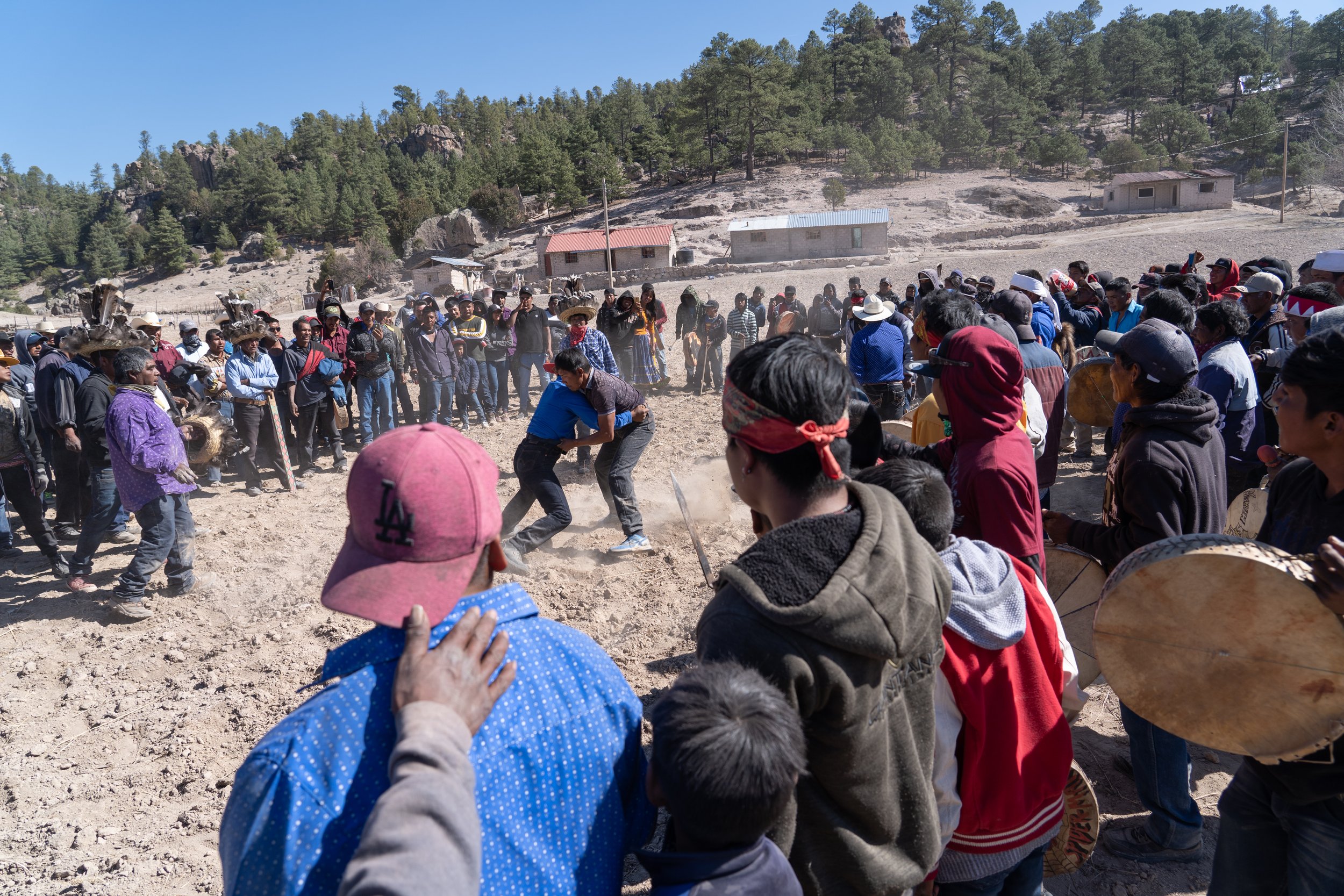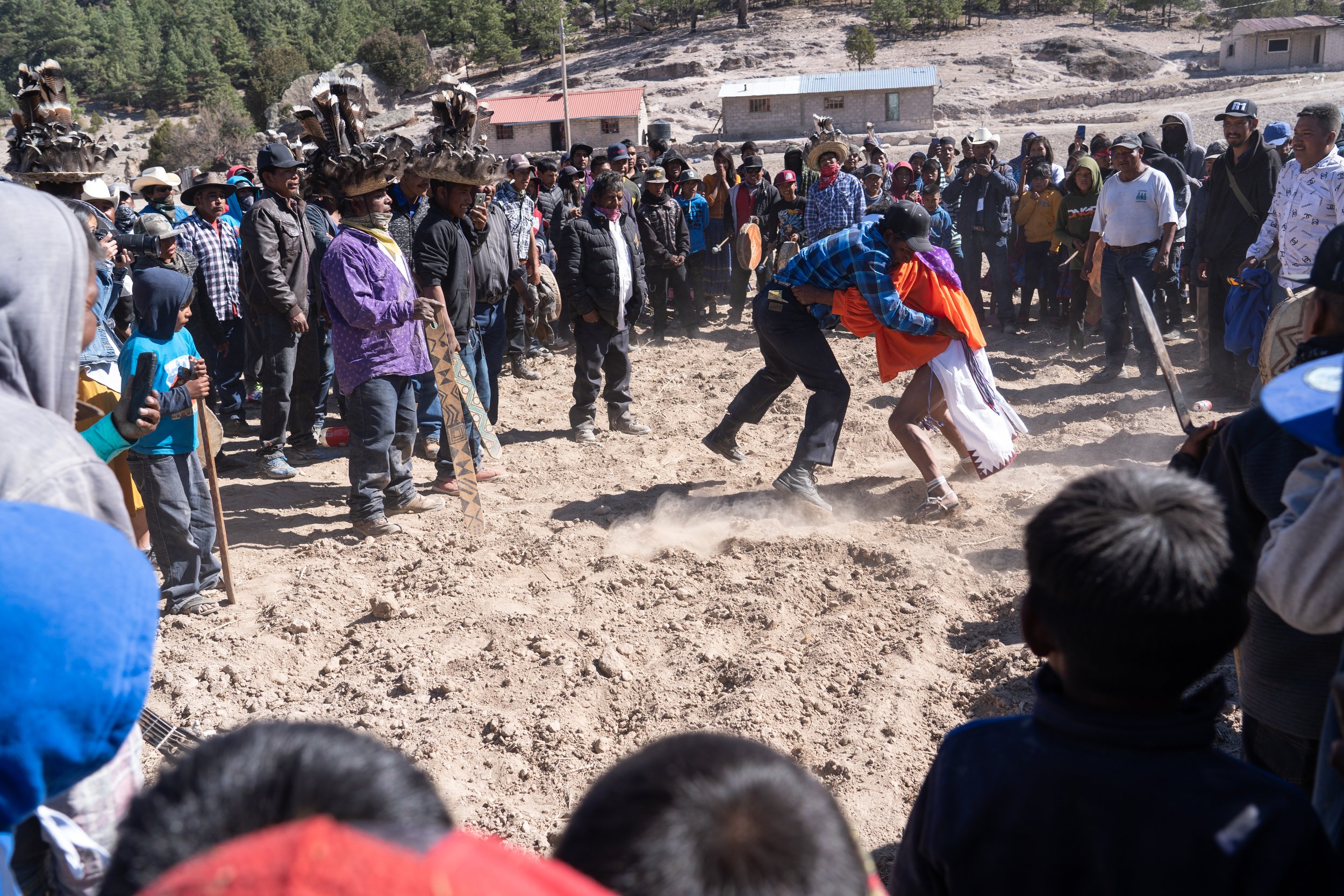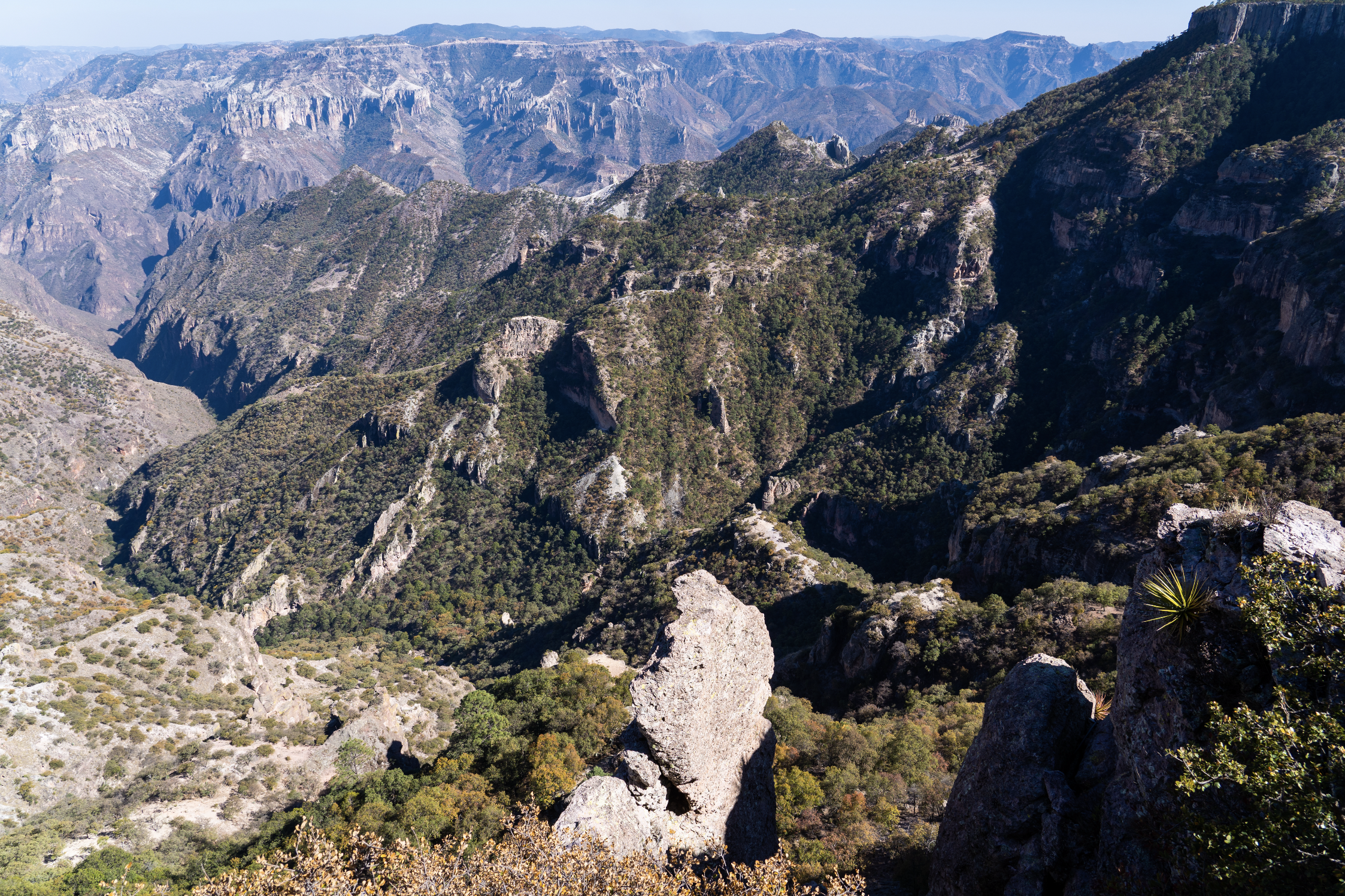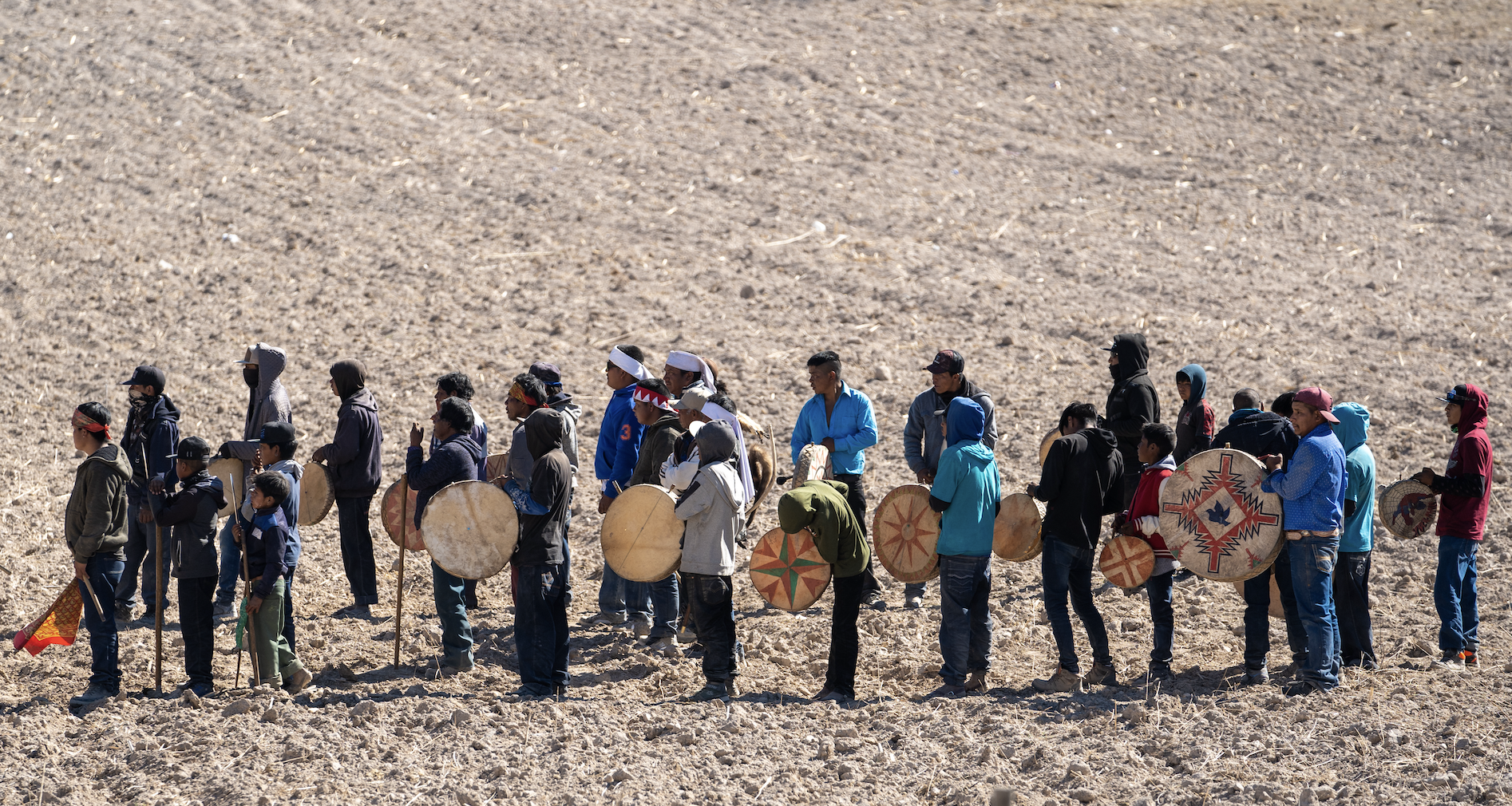LA SEMANA SANTA RARÁMURI
The Rarámuri people of the Western Sierra Madre in the northern state of Chihuahua bring their spiritual traditions to life during Semana Santa— the Holy Week, with the Yúmari dance at the heart of the celebration. This sacred dance, performed with rhythmic movements to the sound of drums and flutes, is a prayer in motion, connecting the Rarámuri to the spiritual world. Participants drink tesgüino, a traditional corn beer, to stay awake and energized throughout the night as they offer their prayers to the earth and ancestors.
Semana Santa also symbolizes the cosmic battle between good and evil, a duality deeply ingrained in Rarámuri beliefs. Masked figures lead processions representing light and darkness, with each participant embodying the internal and external struggles of balancing chaos and order. This fight is not just about morality but reflects the complexities of life and the need for spiritual harmony.
A powerful visual element of the celebrations is the body painting and mask-wearing processions. Participants paint their bodies with natural dyes and wear carved masks that represent spiritual figures, blurring the line between the human and divine. As they move through the night with chanting and drumming, these processions serve as a form of purification, protecting the community from evil and renewing their connection to the spiritual forces.
Durante la Semana Santa, el pueblo Rarámuri de la Sierra Madre Occidental en el estado de Chihuahua expresa sus profundas tradiciones espirituales, con la danza Yúmari como el centro de la celebración. Esta danza sagrada, acompañada por tambores y flautas, es una plegaria en movimiento que conecta a los Rarámuri con el mundo espiritual. Los participantes consumen tesgüino, una bebida fermentada de maíz, que les permite mantenerse despiertos y enérgicos a lo largo de la noche, mientras ofrecen sus oraciones a la tierra y a los antepasados.
La Semana Santa simboliza además la batalla cósmica entre el bien y el mal, una dualidad profundamente arraigada en las creencias Rarámuri. Figuras enmascaradas lideran las procesiones, representando las fuerzas de la luz y la oscuridad, donde cada participante encarna las luchas internas y externas por mantener el equilibrio entre el caos y el orden.
Uno de los elementos más impactantes de las celebraciones es la procesión con pintura corporal y máscaras. Los participantes decoran sus cuerpos con tintes naturales y utilizan máscaras talladas que representan figuras espirituales, difuminando la frontera entre lo humano y lo divino. A través de la noche, entre cánticos y tambores, estas procesiones actúan como un ritual de purificación, protegiendo a la comunidad del mal y renovando su vínculo con las fuerzas espirituales que veneran.
